Last month Fitbit announced their latest device – the Fitbit Ionic. This would be a significant step forward for the company, as it would represent them stepping into a slightly different (and higher end) market. While it was previously difficult to say they competed head to head against the Apple Watch and mid-range Garmin units, it’s now clear that’s the market here. The Ionic packs in things like music playback, GPS, and an app store.
All of which I’ve been testing over the last month since before it was announced. Thus I’ve got a pretty good idea of what works…and what still needs some work. I’ve got two loaner Fitbit Ionic’s that I’ll send back to them shortly once I’m done (as usual), but in the meantime, here’s my full in-depth review!
What’s New:
It probably goes without saying that the Ionic is Fitbit’s most complex and feature-packed device ever. It’s somewhat a blend of the Fitbit Blaze, the Fitbit Surge, and then a bunch of new stuff atop it all. To get you quickly up to speed, I wanted to bulletize all the major new stuff in one tidy section. Fear not, I’ll be diving into all this stuff in detail throughout this review, but this is a good way to quickly digest all the key points:
– Ionic includes GPS internally
– Includes revamped optical heart rate sensor
– Finally totally waterproofed to 50m
– Includes 2.5GB of music storage
– Can Connect to Bluetooth headphones for music
– Also has Pandora app for music streaming (offline)
– Added 3rd party app platform/support
– Added WiFi (plus of course Bluetooth Smart)
– Has battery life of 4 days
– Added Fitbit Pay (contactless/NFC payments) to device
– New guided coaching programs for body weight workouts
– New audio coaching programs for walking & running
– New guided health programs for things like getting rid of sugar habits or couch to 5K
– Plus of course a smattering of new accessory straps
Also, while they were at it back in August, they released two other new products:
– Fitbit Flyer headphones: Bluetooth headphones designed for Fitbit Ionic
– Fitbit Aria 2 Scale: An updated version of their original WiFi scale
Phew – got all that? Good. Let’s dive into things more deeply now.
Unboxing:
Now we’ll start off with a full-on unboxing video. It’s like unboxing photos, but with way more detail:

I might do a secondary unboxing down the road once my purchased units arrive, so I’ll have photos and text from those. In this case though, I used up all my unboxing glory within the video above.
Sizes & Weight:
If we start off with the weight of the Fitbit Ionic, it sits at 47g with the large band, and 45g with the small band.
For comparison, here’s a few others. We’ve got the Apple Watch Series 3 (42mm) at 62g:
Then there’s the Garmin Vivoactive 3 at 43g:
And finally, a pile of past watches and their weights:
TomTom Spark 3/Runner 3: 48g
Apple Watch Series 2: 51g
Polar M600: 63g
Polar V800: 82g
Garmin FR35: 37g
Garmin FR25: 39g
And…the gallery of those!
Finally, comparing the size/thickness of the units, here’s a look at the core three (Fitbit Ionic, Apple Watch Series 3, Garmin Vivoactive 3) when placed side by side:
And the front:
As you can see, when it comes to thickness of the watches, these core competitors of the Garmin Vivoactive 3 and Apple Watch Series 3 are actually really similar. Obviously, they all have slightly different external designs, but none are totally unlike the others.
The Hardware & Models:
If you were to look at a Fitbit marketing campaign of the Fitbit Ionic you’d probably assume there were approximately 48 different models/colors. But in reality there are simply three color variants with a crap-ton of accessory bands with different styles. All three model colors are $299USD, and all have the exact same features.
The three colors are as follows: Silver (aka Blue Grey), Dark Grey (aka Charcoal), and Gold/Copper (aka Burnt Orange)
Oh, there’s actually a secret fourth unit: An Adidas ‘special edition’ variant coming in Q1 2018. This is part of Adidas and Fitbit hooking up in a fitness partnership. Their love shack roughly mirrors that of Apple and Nike (who also made a special Apple Watch Nike+ unit). Like Apple, Fitbit’s Adidas variant will have a few special app-focused items, though the company isn’t ready to detail those yet. Ironically, you’ll remember that Adidas has also recently pulled out of sports tech devices…just like Nike did a few years back.
When it comes to accessory bands, they roughly fall into three camps:
A) Stock ones included in the box (either small, or medium/large) – $29
B) Sport bands – $29
C) Swanky bands – $59
Here’s one from each camp side by side:
The stock band is probably the least comfortable band I’ve seen/worn on a fitness wearable. I wouldn’t go as far as saying it sucks, but I’d certainly prefer not to wear it. The rubber is stiff and unforgiving, and it doesn’t breath. Though, there’s zero chance it’ll ever fall off.
The sport band is far better and more flexible, it’s also much more breathable:
And then you’ve got swanky bands, like these in leather. Here’s the brown leather variant:
In case you wanted it, here’s all the bands you can currently find, courtesy of the gigantic share of Fitbit stock photos (everything else in the photos I’ve taken):
Looking more closely at the unit itself, the shell is a single molded element made out of aerospace-grade aluminum.
The display is then layered in, and the entire thing is properly waterproofed to 50 meters.
Curious what it looks like on the inside? Me too. So I dissected one for you:
Actually, I didn’t dissect it, the Fitbit folks had one taken apart already and I just pressed the shutter button on my camera. For those that want to chipset peep, I focused on taking some really clear pictures of the key parts.
As we’ll talk about in the other sections, the Fitbit Ionic supports NFC contactless payments, as well as music via Bluetooth, such as wireless headphones (like the new wireless earphones Fitbit themselves have made). From a GPS standpoint, the unit includes GPS with GLONASS support, which records at 1-second intervals (more on that in my GPS accuracy section below).
The optical HR sensor is totally new on the Fitbit Ionic, with the company shifting to a tricolor sensor platform (green, red, and infrared). They showed during a presentation some of the numerous designs they tested prior to finalizing the design of the Ionic, including a number of different sensor positions and patterns such as moving photo diodes and LED’s in different patterns and how many of each. They settled on three photo diodes and one LED set in the center. I cover HR accuracy in a later section below.
They also talked about how the flatter/smoother the sensors got, the better the quality of data (assuming light wasn’t coming in).
Like past Fitbits for many years, the optical HR sensor records your HR 24×7, as well as in exercise. The company says they’ve spent significant resources on bettering the algorithms (and hardware) specifically for high-intensity activities, including intervals. Of note though is that the company is now positioned to measure sleep apnea, with an update slated in the ‘near term’. The company says they can determine if someone has sleep apnea with 90% certainty, at which point they’d reach out to their doctor for more testing, etc… The vast majority of people don’t know they have it.
Note that there’s some discrepancy in what I’m hearing from Fitbit on sleep apnea work and whether or not it’d be in the Ionic down the road. For example, in their investor call they stated this research would be applicable to current devices (asked as part of a Q&A), whereas after the event they reached out to say it’s something they’re exploring/researching and may not come to the Ionic. So we’ll see.
The Ionic Basics:
So let’s start off with using the watch in a day to day setting, including what the Fitbit app provides as well. First up is that the watch is touchscreen, along with three physical buttons. Two on the right side, and one on the left side. The display is off, unless you raise your wrist or tap the buttons, at which point it turns on and brings you to the home watch face seen above.
At this point you’ve got the date/time, as well as progress towards your goals for steps and calories, and an icon for your current heart rate. You can tap any of these to get details about it – such as total steps for the day:
If you swipe from the upper edge downwards, you’ll get to the music screen. This allows you to start/pause/skip music tracks. Of course, this requires you be connected to a Bluetooth audio device, like a pair of Bluetooth headphones.
Meanwhile, if you swipe up, you’ll get your recent notifications (text messages basically).
You can also enable 3rd party notifications on a per app basis, which, depending on your preference, is either annoying or great. This means they bypass the standard iOS/Android control centers and use a middle-man to allow/disallow notifications. This can be handy if you only want certain notifications to show up, whereas it also can be a pain if you don’t want to deal with white-listing all the apps you might want.
Meanwhile, if you swipe from the left you’ll dive into exactly two of the settings: Display (gestures on/off), and notifications (on/off).
The real goods though are swiping to the right and getting into the various apps. Like most watch platforms that supports apps, even native functions like going for a run are considered an app. You can see some of these apps here.
This includes the ‘Today’ screen, which is a summary of your activity that day:
Exercise, coaching, and music are all things I’ll cover in the next section. The relaxation timer though walks you through breathing exercises designed to get you to relax. This includes a two-minute breathing session, though you can change that length if you want to.
Additionally, you’ve got the wallet (Fitbit Pay, see later section), as well as timers, alarms, and settings. This settings section is definitely deeper and covers everything from vibration intensity to brightness intensity. Alongside more details for whether or not notifications are enabled in workouts or not.
From here on out you’re into 3rd party apps that are pre-loaded on the Ionic. For example we’ve got both the Pandora and Strava apps. The Pandora app allows you to stream music, while the Strava app allows you to see runs and rides from Strava at a very basic level.
These don’t have to be recorded by the Fitbit Ionic, which is nice. On the flipside, the app doesn’t provide any functionality beyond reviewing historical workouts. For example, you don’t get Strava Live Segments on it.
Finally, there’s the Starbucks app, which allows you to associate your Starbucks card with the device and then pay for your coffee goodness at Starbucks.
Now, to slide back slightly to overall steps and such for the day, the Fitbit is, of course, tracking that as any past Fitbit would do. This includes steps, distance, calories, floors (stairs), active minutes, all alongside your resting heart rate. All of this is viewable in that ‘Today’ app I mentioned above, or also in the Fitbit app on your smartphone (iOS/Android/Windows).
Each of these sections can be dug into more deeply, such as steps, where you can look at various graphs of your steps over various time frames.
One of the biggest draws for folks into the Fitbit platform is their community aspects. Meaning that if you’ve got friends on Fitbit, then it’s more compelling to also be on a Fitbit, as you can challenge them or otherwise taunt them. No really, you can actually taunt them:
Like other Fitbit devices, the Ionic also tracks sleep. You don’t need to do anything aside from wear the device, and it’ll record the time you fell asleep and woke up each day. It’ll also record any times you were awake:
In general, these numbers have been pretty close, especially in the last week. You can dive into a given day and look at totals for each night in terms of sleep stages, as well as compare that to your 30-day average. You can also compare it to people your age/gender. I haven’t decided if I’m better or lesser than them.
Lastly, we’ve got the ability to track your heart rate 24×7 using the Ionic optical HR sensor. The Ionic will constantly monitor and record HR data points, which are in turn transmitted to the Fitbit app/platform. It’s here that you can look at your 24×7 HR status over time.
The most interesting aspect of this data is resting heart rate (RHR), which can generally be used to spot excessive fatigue or incoming sickness. For example, I know that my daily low resting HR is generally below 50bpm, but if I see it spiking to 61bpm, then that tells I’m probably incredibly tired or about to get sick.
That said, Fitbit has long overestimated resting HR values compared to every other device I have. They’re usually on the order of 5-7bpm higher than most other devices, sometimes more. I’ve gone back and forth with Fitbit about this in the past, and how they define resting HR values, and ultimately I don’t think we’ll see a lot of progress there. They did one major shift about a year ago in their calculations, but looking at the Ionic, it seems to have regressed a bit in this specific area.
Sport & Fitness:
To start a workout you’ll swipe over to the apps screen, and select ‘Exercise’. At this juncture you’ll be able to select from half a dozen sports that are on the watch. These include running, cycling, indoor swimming, and so on. However, these default sports can be customized using the mobile app. Here’s the full list:
Note that openwater swimming is not supported this time from a GPS accuracy standpoint. Further, in the regular pool swimming option, heart rate isn’t supported either. It does count laps though.
In addition to swiping through the sports, you can tap on the little gear icon to configure settings for that particular sport. This includes things like auto-lap settings (confusingly called ‘Automatic cue settings’), customizing the data metrics shown, and auto-pause. When it comes to data metrics, you get three ‘chunks’ you can customize: Top, middle, bottom.
The top and bottom metrics will remain static, while the middle metric will rotate through when you tap it. So while it’s technically just one page, by tapping you get a bunch of metrics. It’s certainly not as flexible as most other watches from a fitness standpoint, but it also kinda fits the bill for the Fitbit brand.
While you’re doing all that, the unit is acquiring GPS signal. Once it has this, it’ll say ‘Connected’. Before that point it’ll say confusingly “Let’s Go!”. I don’t really understand the logic here, as telling people to go before GPS is acquired is about the worst possible thing you can do from a GPS signal standpoint. Not only will they get inaccurate data, but it prolongs the acquisition of GPS versus just standing there a few more seconds.
Thankfully, most times it does find GPS in a matter of seconds, so by the time you decide to press start, it’s ready to roll. Once started it’ll show your stats on the screen when you raise your wrist or press a button. Otherwise, the screen is off.
As you pass through each lap (per your settings), you’ll get automatic lap banners. Somewhat interestingly, on my most recent run I had accidentally left the automatic laps at .50 miles (seen above in photos), yet it actually alerted me at each 1.00 miles.
Speaking of bugs, during this same run the watch crashed mid-run for no apparent reason. I had crossed the three-mile marker a short distance before, and then I happened to glance down and found it back on the ‘Run’ start screen (to start a new run). I was able to start a new run, but obviously that’s less than ideal – especially since it totally lost the first half of the run (gone). This is the first time it’s done this for me, but it’s also the first time in a long time (years?) I’ve had a GPS watch crash on me mid-workout (non-beta).
In any case, as I run along I can tap the screen to change metrics:
All of this works fine and dandy, but is essentially the same across all sports. For example, even if you choose Tennis, there’s not really anything specific to tennis here. It still lists data fields like laps and distance. It’s unlikely that you’d use ‘laps’ for anything tangible in tennis.
Once you’ve completed your workout you can press the physical pause button in the lower right corner. This is something I much appreciate over the Apple Watch, which requires swiping. For sports with sweat and possibly rain or gloves, a physical button is always better.
At which point you’ll get your workout summary (or, half my summary in tonight’s runs case):
All of this is then sync’d to the Fitbit app. Note that there isn’t any way to access your workout data on the watch again after you’ve completed the workout. Meaning, there’s no ‘history’ page. Though, if you sync to Strava, then you can pull it up that way using the Strava app on the watch.
You can also look on Fitbit’s site and see the runs there as well:
Switching gears a little bit, Fitbit also includes some default workouts via the Fitbit Coach app. This is different than the premium coaching options that are coming online soon. The Fitbit Coach app guides you through three different body-weight focused workouts:
After selecting a given workout you can either start it, or look at the steps:
During the workout, it’ll give you a little animated GIF of the specific moves/positions you’re supposed to do, along with count-down timers for each section.
It all works well enough, though with only three workouts in there, it’s pretty limited. I think back to the Adidas Smart Run GPS watch that had boatloads of workouts. Same goes for the Microsoft Band, which had tons of workouts too. On the flip-side, both of those devices are now defunct…so maybe giving away free workouts wasn’t the recipe for success either.
Of course – Fitbit’s main goal in this area is to get you to pay for their premium coaching options. Though those aren’t available quite yet.
Finally, note that at this time the Fitbit Ionic is somewhat astoundingly unable to connect to any external sensors, including heart rate straps. It also doesn’t broadcast its heart rate outbound (such as over Bluetooth Smart). The first piece in being unable to connect to heart rate straps makes it far less competitive for certain activities where optical HR may struggle (like I see with cycling). Most other devices, including those from Apple, Garmin, Polar, Suunto, and well…everyone, allow connection to at least a heart rate sensor. Hopefully Fitbit looks to change this.
Music:
The Ionic is able to play back music using it’s 2.5GB of internal storage, combined with any form of Bluetooth headphones or speakers. You could just as easily pair it to the Fitbit Flyer headphones as some small Bluetooth Speaker. Heck, it’d probably even work with your car just fine too.
At present Ionic supports two core music types: Files you transfer over, and the Pandora platform for streaming music. With Pandora, you’re caching specific playlists onto the device itself. I’ll start with Pandora, and then cover other music. To begin, you’ll go into the Ionic settings on the mobile Fitbit app and then select Pandora from the Music section:
It’s up there that you can auto-sync your top Pandora stations, or you can specify up to three stations from a small pile of stations. Here’s a list of the ‘popular stations’ you can add onto the unit from the app.
Once that’s done you’ll go ahead and plug in your Ionic to a wall charger, and ensure that you’re on WiFi with the device itself. After some time (a heck of a lot of time), it’ll start transferring music. You can force it from the mobile app to start, but I find that doesn’t seem to speed things up. I initially tried a few hours of waiting to get my first sync to complete/show anything, and that failed to do anything multiple times. Eventually I gave up tracking my sleep for a night and let it sync overnight and it finally finished the sync process. Once that’s done you can select which playlist you want to play:
And then from there it just starts playing it. You can increase/decrease volume on the device, as well as skip the tracks and pause/play. You can’t specify certain tracks, just skip ahead.
Then finally, anytime the unit is plugged in and charging it should also sync updates to the Pandora stations. But since I don’t really track which songs are in there, I’ll have to take their word for that.
Next up we’ve got loading music onto the watch. To do this you’ll need to configure your watch to use WiFi, and then you’ll need your computer (PC or Mac) to be on the same WiFi network as your watch. You cannot load music from your phone. Within the Fitbit app on your computer, dig into your Ionic settings and then choose Music > Personal Music.
As the text above notes, you’ll need to stick your Ionic into a music receiving mode. Essentially, it has to catch the music football. Also of note, you can’t do this on a hotel/Starbucks/etc WiFi as those all require logging in.
Once that’s all settled, you’ll be able to add folders for your music:
It’s at this juncture that I realized I don’t actually even bother to have stored music on my laptop anymore. I just use Spotify 95% of the time, and occasionally Amazon Prime music the remainder of the time. So I went off and grabbed an album and kerplunked it into a folder to sync over.
I also found out that it requires you use playlists, and not just folders of music. You can add all the folders in the world, but it won’t do anything till there’s a playlist involved.
Somewhere along the way the Ionic disconnected from the music transfer bit, and I had to re-enable the music sync piece. Still, eventually it got onto my Ionic. It’s at this point that I could play the music from the Ionic to the headphones. All of which is pretty straightforward.
From a connectivity standpoint, I haven’t had any issues with droppage of Bluetooth connectivity from the watch to the headphones. I’ve tried both left and right wrists, and it seems fine. It’s a common problem among watches to headphones to have one side that works better (since the receiver is usually on a given side), but in this case I’ve been good.
Finally, regarding Spotify – many have wondered about that. So out of curiosity, I asked why they shifted from what was previously some relationship with Spotify to Pandora. You’ll remember Pebble had tied the knot on a Spotify streaming deal for their planned Core device. Once Pebble was acquired by Fitbit, they killed off the Core – but I had hoped we’d see the Spotify relationship surface down the road.
The very diplomatic answer from CEO James Park was that the music industry is ‘challenging’ at best. Though his eyes said to me ‘I want to punch myself in the balls over the music industry’. Hopefully though, we’ll see other streaming apps soon.
Fitbit Flyer Headphones:
In addition to launching the Fitbit Ionic smartwatch, the company also threw down a second product at the same time – the Fitbit Flyer headphones. These Bluetooth wireless headphones are designed specifically with the Ionic in mind, though they do work with your phone or any other Bluetooth audio capable device.
In order to get you up to speed, I’ve got an entire video on just the Flyer headphones – including unboxing and how they work step by step:

The Fitbit Flyer comes in two different color variants, a gold/white color, and a silver/blue color. Either version will set you back $129, which is slightly below the high-end premium wireless sport headphones. When it comes to why Fitbit decided to enter the market, they noted that many existing sport headphones either weren’t designed to last very long – usually succumbing to a waterproof related death early (which is true). So Fitbit aimed to solve that by internally waterproofing the headphones as well, in the event sweat/liquid does manage to get in.
If you crack open the package you’ll find a slew of different size ear tips, wings, and fins. It’s like one of those Oscar Myer snack packages, but for headphones.
Now, aside from the hardware pieces, there are some interesting software aspects. First is that it can actually concurrently connect to both the Fitbit Ionic and your phone concurrently. This is actually unusual, and is notable because it allows you to be listening to music while running along from the Ionic, and then have your phone ring-in with a call. All of which is handled seamlessly. Whereas with most other headphones you wouldn’t be able to take your phone call on the headphones as it only could pair to the watch (one item at once).
As part of taking that call the Flyer includes noise cancelling via its two microphones, allowing wind reduction to occur similar to what different action cameras are doing today. The phone speaking portion carries through with the inclusion of various phone digital assistants (e.g. Siri). On the listening side, it’s also got passive noise isolation, which will help reduce extra sounds in your environment.
From a battery life standpoint the unit clocks in at 6 hours of active time (and can quick charge for 15 minutes and get another hour).
Finally, the unit actually has two different sound profiles for listening. There’s a regular sound profile and then a ‘PowerBoost’ sound profile, which increases the base and EQ. That can be accessed by just touching the two buttons at once, and you’ll immediately hear the difference. To control volume, you single tap up or down on the controls piece, and to skip/back on tracks you long hold. Super simple.
Overall in doing a few workouts with them – things sound pretty good. But I’m hardly one to judge various audio headphones – as I don’t tend to run with them very often (and certainly not cycle with them). Still, the integration piece is really well done (especially the pairing, as you can see within the video).
Fitbit Pay:
As part of the Fitbit Ionic rollout, Fitbit is also spinning up Fitbit Pay, which is their contactless payment solution that allows you to pay for items at stores using just your Fitbit Ionic device. This wireless payment system is handled via NFC, allowing you to just place your wrist close to the payment terminal at a store.
You’ll start by adding your credit cards into the Fitbit companion app. The platform supports Visa, MasterCard, and American Express. Because the platform won’t light up till October, I had to use a demo card. Fear not, you don’t need some Fitbit branded credit card or anything.
There are some limitations here though, namely on which banks are supported. See, every time one of these companies (Fitbit, Garmin, Apple, Samsung, etc…) starts a contactless payment platform they have to negotiate directly with every bank in the world that issues credit cards. Yes, really, every…single…bank…individually.
For a company like Apple with tremendous market pull, that’s relatively ‘easy’ (relatively being the key word here). They can ask any bank, and that bank will say ‘Yes sir, how fast?’. Whereas for a company like Fitbit or Garmin, that process can take a bit longer. As such, Fitbit is missing a number of major banks (so is Garmin). In fact, none of either my US or French credit cards work with the platform (now or in October). This notably includes Chase Bank cards, which is the largest credit card issuer in the US, 50% more than their nearest rival.
In any case, as part of the setup process you’ll also set a PIN code, which is used to lock/unlock the unit to ensure that if someone steals your watch that they can’t just go off on a shopping spree. The Apple Watch works the same way. The PIN code shows up on the unit when you first attempt to interact with it after placing it on your wrist. If you remove the watch then you’ll need to re-enter the PIN code.
When it comes to using it for checkout, you’ll simply long-hold down the left button for about 2 seconds and it’ll bring up the payment screen:
At this point you can just tap your wrist on the payment reader. Obviously the payment reader has to support NFC payments, which will vary quite a bit.
For example, in the US I find most major retailers support wireless payments, whereas a small ma & pa shop out in the countryside might not. Yet at the same time at home in Paris almost all the payment pads actually do support contactless payments, but aren’t setup/enabled.
Once you’ve tapped the reader it’ll show as successful on your wrist. You can also go into the phone app to check/validate the payment stats. Here’s the entire process at work at a gas station in a super short clip I filmed:

The main goal here is to be able to go out for a run or ride or whatever, and not take your wallet with you. Simply take your Fitbit and be able to drop into that juice shack afterwards and grab something without needing a credit card or cash. Of course, you’ll want to validate the shops you plan to visit do actually support contactless payments before showing up with just the watch one day. But most of us end up back at the same places after our runs, and usually know those well enough.
In talking to the CEO of Fitbit, James Park, about where he envisions this technology going within the Fitbit product line – he noted that they want to see it as broadly supported as possible, noting:
“That’s [NFC] a technology we’re going to try and push across our entire line.”
I followed up with asking whether that meant we’d see it down at the usual ~$120-$140 units that are in the Fitbit Charge/Alta/etc range in the future, and he confirmed that’s the goal:
“Yes, over time.”
Of course, that all takes new hardware – so it’s not something they can add to existing units today – but it sounds like that’s clearly the direction going forward.
3rd Party Apps:
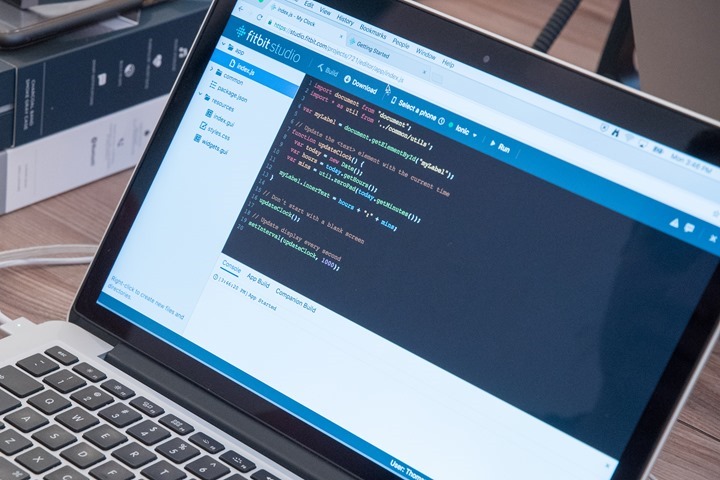
The Fitbit Ionic is the first Fitbit device to support 3rd party apps. Much of the work to make this happen came from the Pebble, which Fitbit acquired last December. This acquisition was mainly for their engineering talent and work on a new JavaScript-based platform that was in beta for Pebble devices. Fitbit didn’t push forward any of the Pebble devices.
The good news out of that though is that Fitbit’s app SDK and platform is generally more mature than that of a company just starting out with their first app platform. The bad news though is that as of today there are basically no apps in the store. Of course, that’ll change quickly.
Still, to show you how this works, to load apps you’d go into your Fitbit Ionic settings, and select ‘Apps’. It’s here that’ll show you two sets of info. First you’ve got ‘My Apps’, which shows things you’ve loaded already. You can select a given app to access any settings, for example, to add a Starbucks card:
Then if you tap up the ‘All Apps’ option, you’d be able to see other apps to load onto the device. Except, at this time, there’s no other apps to load. So…it’s a short list.
I’ll likely circle back on this later this year once the app store is a bit fuller and we can see what things look like. I also expect we’ll see more apps launch as the Ionic starts shipping here on October 1st.
Switching briefly over to the developer side of apps (you can skip this part if you don’t want to geek-out for a second), the new SDK is entirely web-based and called Fitbit Studio. The SDK will be available starting tomorrow, September 26th.
It allows you to create apps and watch faces using JavaScript and SVG, and doesn’t require you be tethered to iOS or Android to create apps. As long as you have a web browser, you’re good to go. Here’s the most stylish watch face in the entire collection – the DCR Face…Watch Face. My Face, on a Watch Face. Down the road (near term), you won’t need the SDK for this, but in the meantime, my awesomeness awaits:
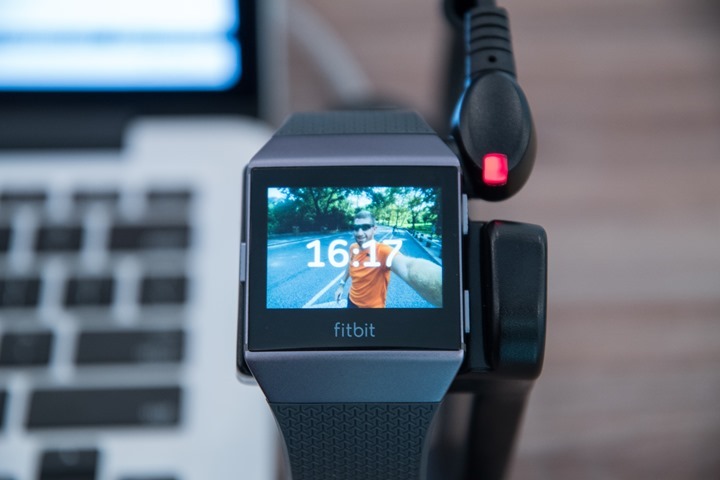
The platform is super easy to use, and deploying to a watch is virtually instant – allowing quick testing (though unfortunately there isn’t an emulator available yet, albeit it sounds like that’s on the radar).
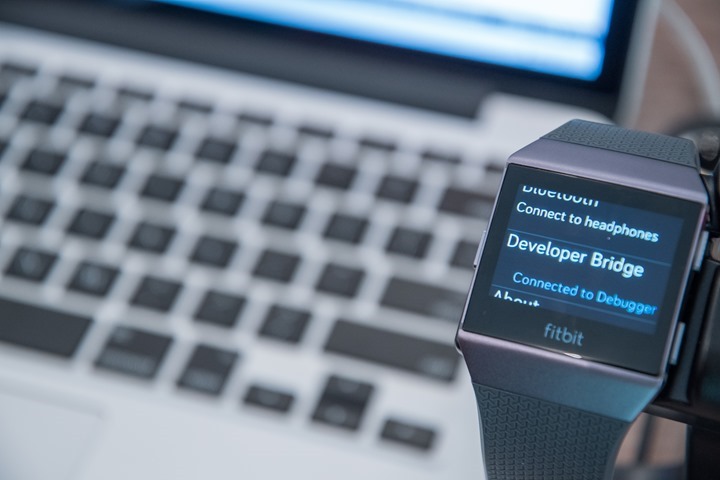
What’s more interesting is that folks can share apps and watch faces with others without going through an approval process. For example, if you want to create a custom watch or app face for your team or family or whatever, you can share that via a private link. That private app won’t show up in the app store for the world to see, as for that you’ll need the Fitbit approval (which they hope to keep quick).
The Fitbit App SDK has been released, but it’ll take some time for apps to show up. Expect to see smaller apps in the near term (e.g. hobbyist apps), but then probably by the end of the year you’ll see larger companies diving into things. Of course, like any app platform it’s likely that Fitbit is working closely with major companies to try and get apps completed for their platform. So I wouldn’t expect things to be empty for long.
Heart Rate Accuracy:
Next up we’ve got heart rate accuracy. This roughly falls into two buckets: 24×7 HR, and workout HR. By and large, I see no tangible issues with 24×7 HR consistency, but I do see issues with it simply determining my RHR value as higher than it is. This isn’t a measurement issue, but rather the algorithms they use on the backend to decide what ‘resting’ really is.
Said differently: It’s measuring and recording my 24×7 heart rate just fine, but then when it comes to deciding what constitutes the resting HR value, it seems to err on the high side. I talk about RHR values and 24×7 monitoring here and why it’s interesting.
Before we move on to the test results, note that optical HR sensor accuracy is rather varied from individual to individual. Aspects such as skin color, hair density, and position can impact accuracy. Position and how the band is worn are *the most important* pieces. A unit with an optical HR sensor should be snug. It doesn’t need to leave marks, but you shouldn’t be able to slide a finger under the band (at least during workouts). You can wear it a tiny bit looser the rest of the day.
Ok, so in my testing, I simply use the watch throughout my normal workouts. Those workouts include a wide variety of intensities and conditions, making them great for accuracy testing. I’ve got steady runs, interval workouts on both bike and running, as well as tempo runs and rides.
For each test, I’m wearing additional devices, usually 3-4 in total, which capture data from other sensors. Typically I’d wear a chest strap (usually the HRM-TRI or Wahoo TICKR X), as well as another optical HR sensor watch on the other wrist (many models during this testing period). Note that the numbers you see in the upper right corner are *not* the averages, but rather just the exact point my mouse is sitting over. Note all this data is analyzed using the DCR Analyzer, details here.
First up, a run in Amsterdam a weekend ago. This was a relatively flat run, and a relatively even pace. Here’s how things looked:
As you can see, things are really quite good. There’s a very tiny bit of difference in the first 26 seconds, but nothing that I could really get too upset about. The first few minutes of a run are often tricky as your body warms up – but in this case I’d say the Ionic actually did the best of all three sensors, even better than the chest strap.
But that’s the thing about cooler and dry fall runs that aren’t yet super-cold, it’s where optical HR really shines compared to a chest strap that can often get tripped up with low moisture.
Next let’s look at a run with some intensity variability in it. Oddly enough I’ve chosen the run from this evening where it crapped out half-way, so we’ve only got the second half of the run. But that’s OK, that’s the part where I did fun stuff. The first part of the run as I watched the HR it matched the HR strap. You’ll see the Ionic line show-up mid-way through this (the red line):
Let’s zoom to the mini intervals I did. These were about 30-60 seconds long each, with pushed paces and then back to my regular pace in between. Thus it wasn’t complete recovery in between, so the peaks/valleys are less. But you can see my HR is roughly going between 160BPM and 175-178BPM.
In any case, you see that on the first one the Wahoo TICKR completely missed the boat. I adjusted it and it was fine. Again – a beautiful example of a cool/dry fall evening run where there wasn’t a lot of sweat, but was a solid breeze drying things out.
You’ll see on the 2nd and 3rd intervals, all three units were very close. Yet on the 4th and 5th bumps, the Spartan optical HR sensor clearly hit cadence lock. That’s when it locks onto your running cadence instead of your HR. This was likely because I picked up the pace a bit on those two. Nonetheless, the Fitbit Ionic nailed all these. Not sure how much more simply I can put it.
I will note that in my first look post at launch I saw some issues with the unit acquiring heart rate at the beginning of a run. That was on beta software and I haven’t seen that on production software.
Lastly, let’s take a look at some cycling. This was a nearly 5-hour ride (including a 45 minute beer stop of course) in the Swiss Alps. You can read all about it here.
What’s interesting on this ride is looking at how it handled different conditions. Take the first 2hr and 40 minutes. Aside from some brief descents, this was almost exclusively climbing. And within this section, things for the Ionic in yellow largely looked good (except the short descents where it strayed):
Now I make a habit of never stopping the watches when I ride/run, merely because it makes my life easier. So when atop the mountain we grabbed a drink for a bit, it kept recording. But it really struggled here (2:40-3:20). Don’t worry, the Vivosport also struggled.
However, the struggles continued as I started to descend. This is very common for optical HR sensors, as the bumps (of which there were plenty) are tricky when combined with normally low heart rates.
Then, you see around the 4:20 marker that things come back together again. This is climbing back up – and the intensity of the heart rate makes things match. As soon as I crest the top though, it has troubles again. This behavior matches what I saw on almost all rides. Anything with consistent and sustained intensity was fine, but variable or low-intensity was tough.
Thus, overall I’d say that for most running conditions the optical HR sensor is generally pretty good, whereas for cycling outdoors it’s tough. I can’t show you cycling indoors, because Fitbit doesn’t export the recorded HR data on non-GPS workouts. But I can say that those data points, as I watched them live during the trainer workouts, were fine.
GPS Accuracy:
There’s likely no topic that stirs as much discussion and passion as GPS accuracy. A watch could fall apart and give you dire electrical shocks while doing so, but if it shows you on the wrong side of the road? Oh hell no, bring on the fury of the internet!
GPS accuracy can be looked at in a number of different ways, but I prefer to look at it using a number of devices in real-world scenarios across a vast number of activities. I use 2-6 other devices at once, trying to get a clear picture of how a given set of devices handles conditions on a certain day. Conditions include everything from tree/building cover to weather.
Over the years I’ve continued to tweak my GPS testing methodology. For example, I try to not place two units next to each other on my wrists, as that can impact signal. If I do so, I’ll put a thin fabric spacer of about 1”/3cm between them (I didn’t do that on any of my Fitbit Ionic workouts). But often I’ll simply carry other units by the straps, or attach them to my shoulder straps of a CamelBak. Plus, wearing multiple watches on the same wrist is well known to impact optical HR accuracy too.
Next, as noted, I use just my daily training routes. Using a single route over and over again isn’t really indicative of real-world conditions, it’s just indicative of one trail. The workouts you see here are just my normal daily workouts.
I’ve had quite a bit of variety of terrain within the time period of Fitbit Ionic testing. NYC, Amsterdam, Las Vegas, Paris, Reno, French Alps, Switzerland, Germany, Austria, and more I’m probably forgetting. Mountains, desert, woods, and cities.
We’ll take a look roughly the same activities as above, starting first with the run in Amsterdam. Here’s how that looks at a high level:
You can see the FR935 and the Fitbit Ionic agree, whereas the Suunto unit doesn’t in certain sections, namely within the park. This is where you want to use satellite view to look more closely and see if it matches the path/road in the park:
You can now easily see that the Suunto went swimming in the pond, while the Fitbit and Garmin tracked more closely. But even within that context, I wouldn’t say the Fitbit was great either. For example look at the sections I attempted to highlight below on the bottom portion, where the Fitbit was off in the woods:
Of course, the Garmin wasn’t perfect either, it’s offset a bit on the upper edge, but it’s degree of suck was less than the other two.
It’s somewhat interesting to me that the units had the most trouble within the park (which isn’t that dense in the grand scheme of things), compared to the building areas that they tended to do better on.
Next, let’s go to a mountain run. While I’ve got other runs that are in more boring locales, I like to show this one, as it really shows how solid the GPS accuracy is. For reference, this is what the terrain looked like that I was running alongside (a mountain cliff):
Here’s a look at the GPS track at a high level:
But let’s zoom in where the mountain is steepest, right along the lake edge:
It’s quite good here. The Fitbit Ionic takes the cake as the best overall GPS track (note: The Vivoactive 3 was on much older beta firmware in his run, so while not bad, take that with a grain of salt).
Of course, there are some brief sections where the Fitbit struggles a tiny bit, as the path is slightly covered by a rock covering of sorts (where you see the fencing in the above pic). Here you can see it lose the plot and go for a swim. In this case the Vivoactive 3 nailed that few hundred meters better.
But overall on this challenging run, all three units did fairly well.
Lastly, we’ll check out that Swiss alps ride, and look at the accuracy there:
This route was amongst the huge cliffs of the alps, the dense forests, and generally incredibly tricky GPS terrain. I had a boatload of units recording during this ride, so tons of data to compare against.
Skimming through things, everything looks very good, so I’m going to choose the most difficult section to zoom in on, which is in dense woods:
Everything looks reasonably good, save one little turn. This is a really complex switch-back from a GPS standpoint, right against a cliff of sorts.
You can see all the units struggled a bit here maintaining the same path in both the up and down directions. However, the Fitbit did struggle a tiny bit more in one direction – being further out.
Still, this is incredibly difficult conditions, and this section comprises all of a few hundred meters of the entire 60KM route.
Overall the GPS accuracy on the unit tends to be good in most circumstances. However oddly, I found it tends to do better in tougher situations than easier ones. Sometimes in the easier ones it ‘wanders’ a bit as you saw in the Amsterdam park example.
(Note: All of the charts in these accuracy sections were created using the DCR Analyzer tool. It allows you to compare power meters/trainers, heart rate, cadence, speed/pace, GPS tracks and plenty more. You can use it as well for your own gadget comparisons, more details here.)
Summary:
All in all the Fitbit Ionic is without question Fitbit’s most impressive offering to date. And in doing so they’ve got a very legit competitor to certain variants of the Apple Watch, as well as Garmin, on the fitness side. The addition/combination of music, GPS, and contactless payments manages to hit the sweet spot of what someone might want that heads out for a morning run and wants to grab breakfast at Starbucks afterwards a few blocks from home.
Of course, this combination isn’t new either. Apple’s had it for a while now, and quite successfully too. But what Apple has lacked (and still does) is the fitness-focused backend platform. Apple’s devices are in many ways still very isolated from a health/fitness standpoint (unless you use 3rd party apps). Everything is more or less locked into Apple Health, which is specific to your phone. There isn’t a website you can go to.
And certainly these offerings should absolutely be compared, as with Garmin’s units for the more sports-focused crowd. Each has their own pros and cons. Apple’s hardware is beautiful along with a massive app ecosystem, but the battery life less so. Fitbit’s battery life is better, and their daily activity tracking platform is great. Meanwhile, Garmin dominates the sports angle, in part due to much longer battery life. I think a standalone post comparing the three major options is probably in order (Fitbit Ionic, Apple Watch Series 3, Garmin Vivoactive 3).
Until then – you won’t go wrong with any of them. I’ve got all of them, and all of them at their core work well. It’s just a matter of figuring out what exact features you want and how you prioritize them.
With that – thanks for reading!
Found This Post Useful? Support The Site!
Found This Post Useful? Support The Site!
Hopefully you found this review/post useful. At the end of the day, I’m an athlete just like you looking for the most detail possible on a new purchase – so my review is written from the standpoint of how I used the device. The reviews generally take a lot of hours to put together, so it’s a fair bit of work (and labor of love). As you probably noticed by looking below, I also take time to answer all the questions posted in the comments – and there’s quite a bit of detail in there as well.
If you're shopping for the Fitbit Ionic or any other accessory items, please consider using the affiliate links below! As an Amazon Associate I earn from qualifying purchases. It doesn’t cost you anything extra, but your purchases help support this website a lot.
And of course – you can always sign-up to be a DCR Supporter! That gets you an ad-free DCR, access to the DCR Shed Talkin' video series packed with behind the scenes tidbits...and it also makes you awesome. And being awesome is what it’s all about!
Thanks for reading! And as always, feel free to post comments or questions in the comments section below, I’ll be happy to try and answer them as quickly as possible. And lastly, if you felt this review was useful – I always appreciate feedback in the comments below. Thanks!


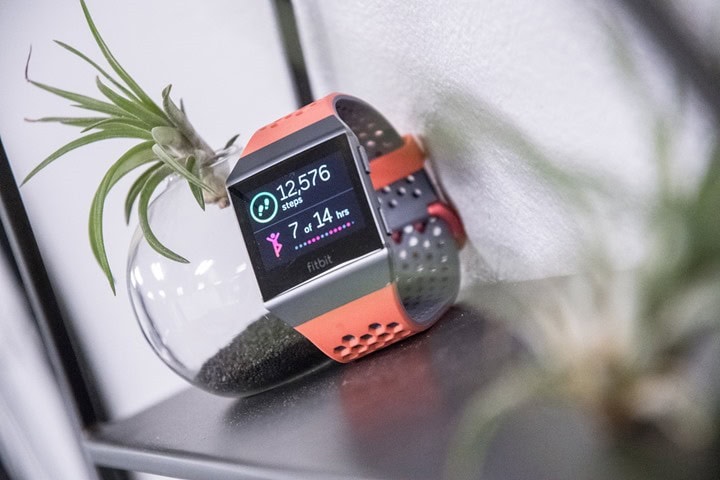
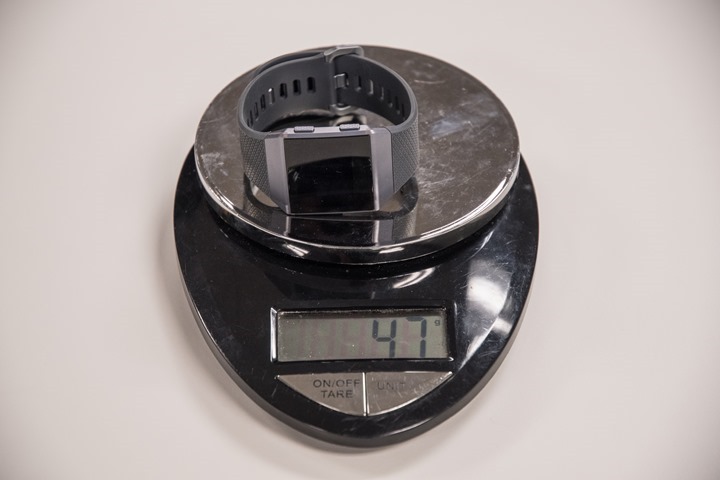
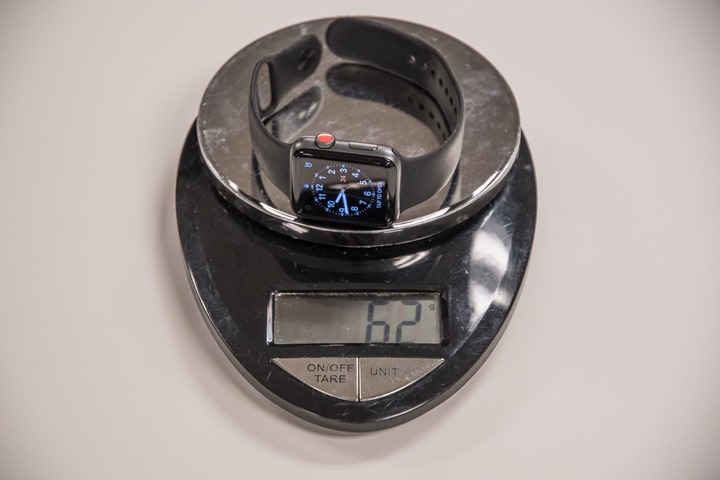
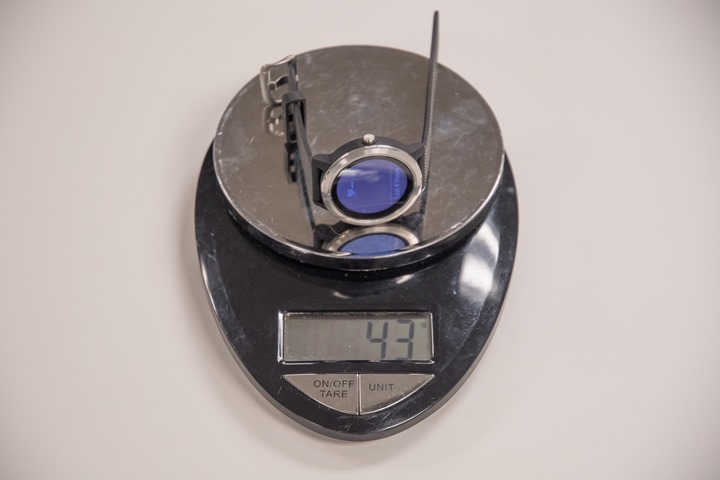

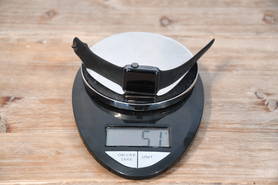
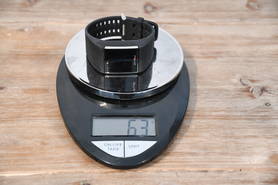
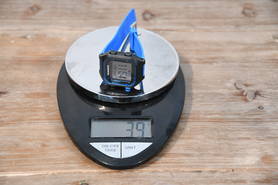
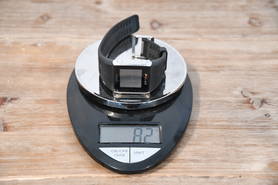
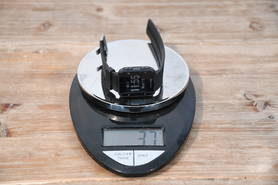
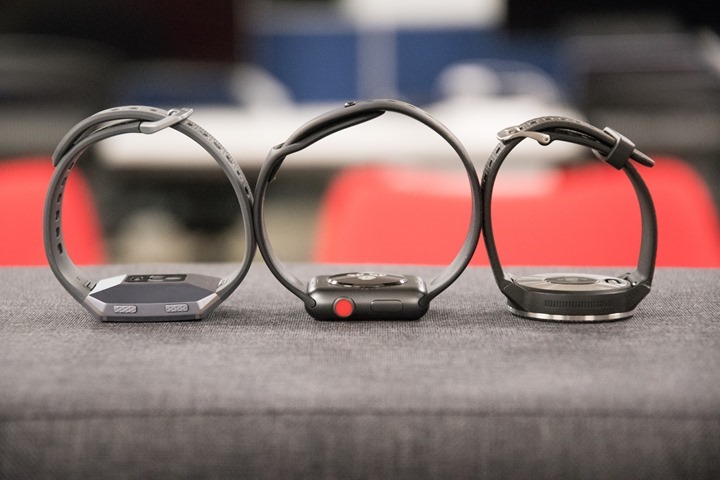
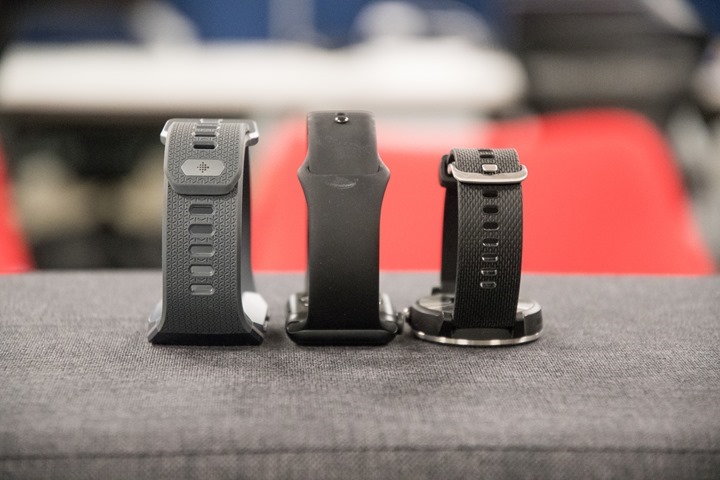
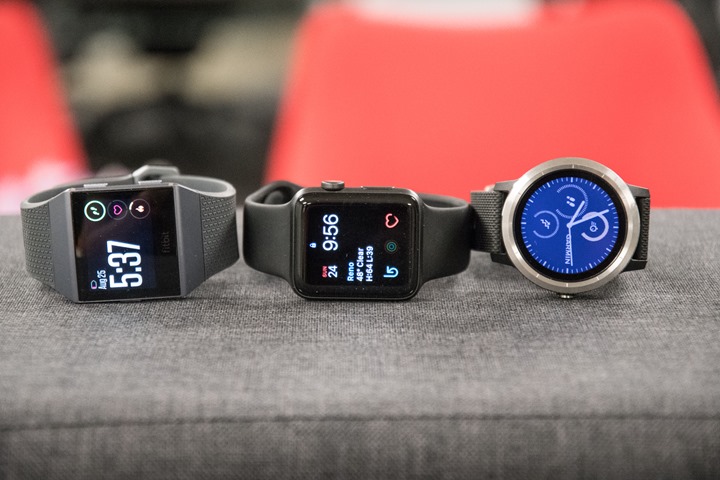
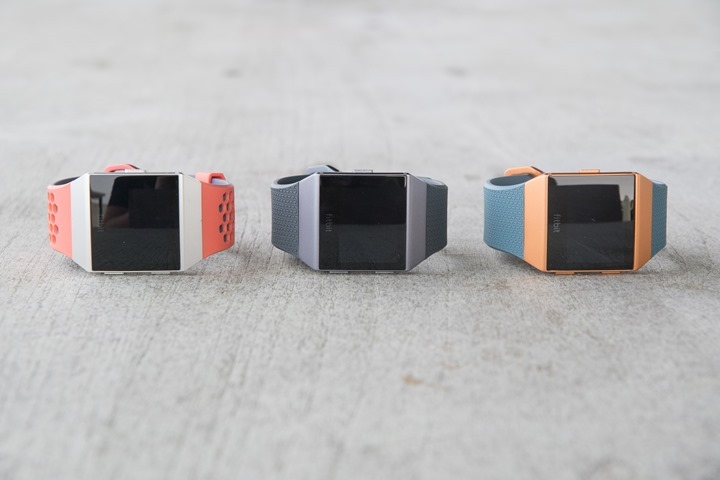
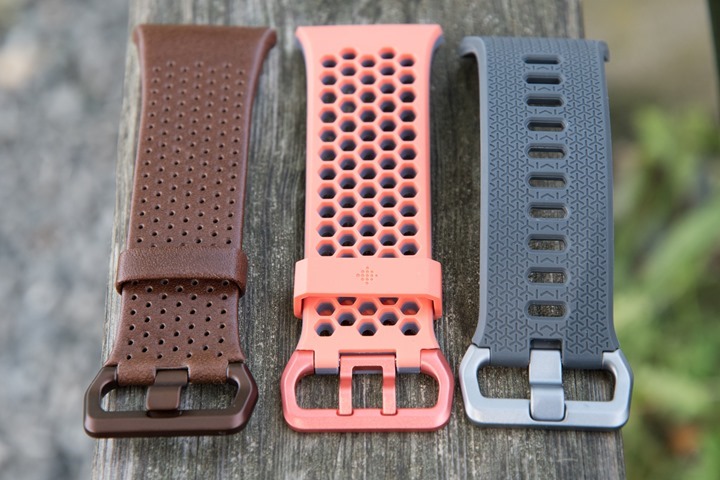

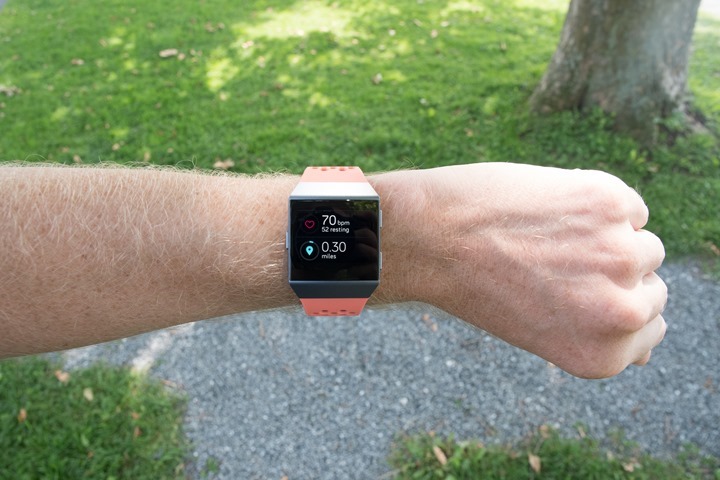
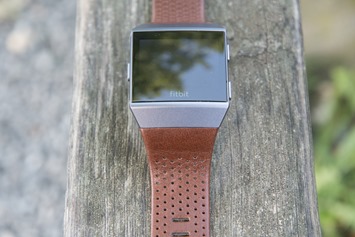
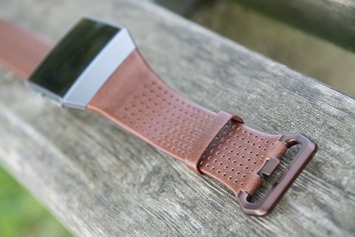
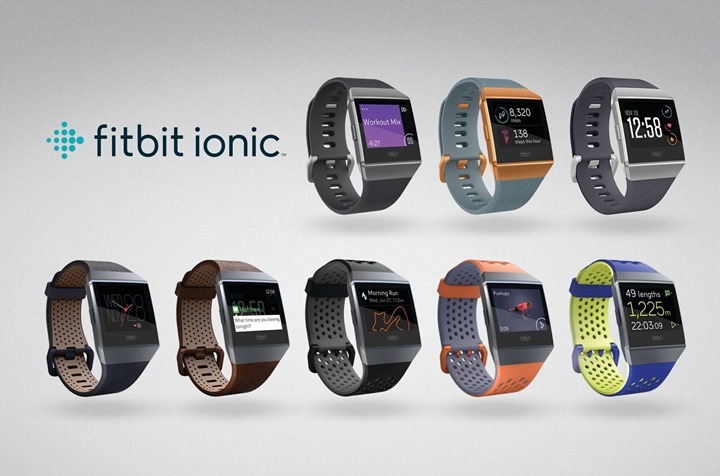
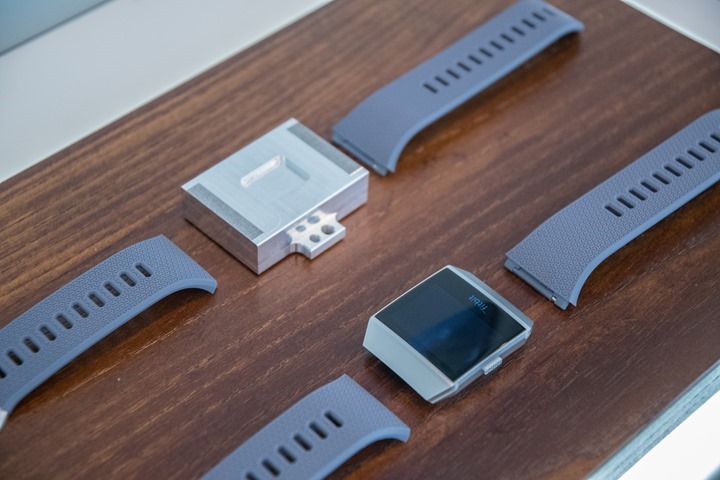
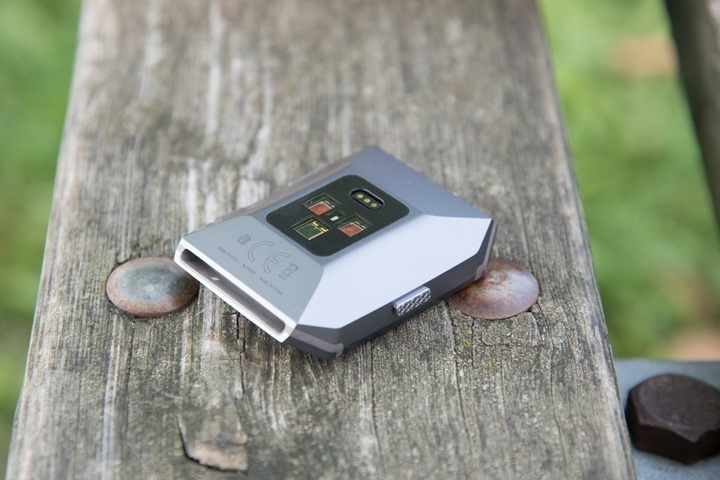
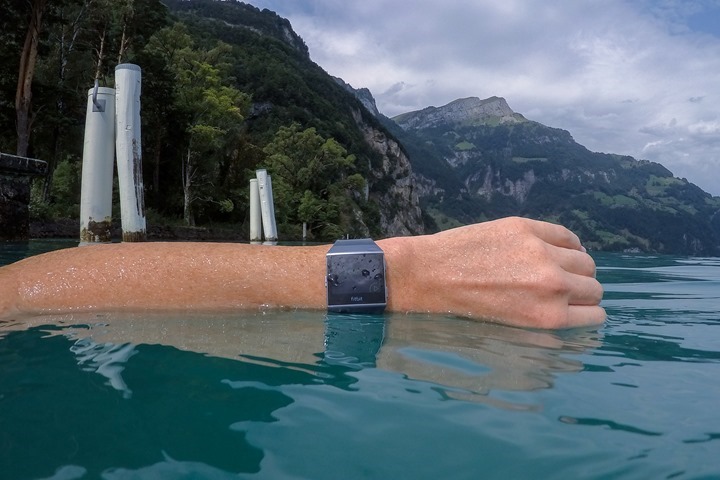
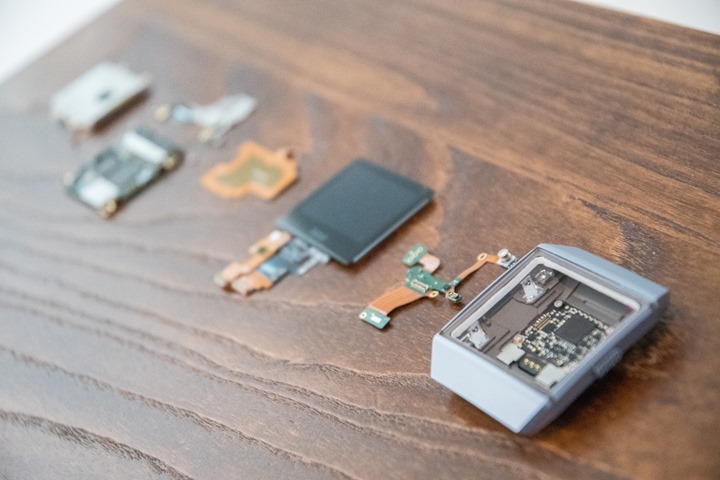
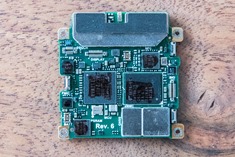
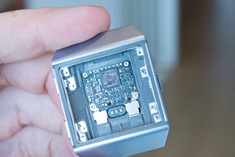
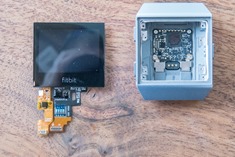

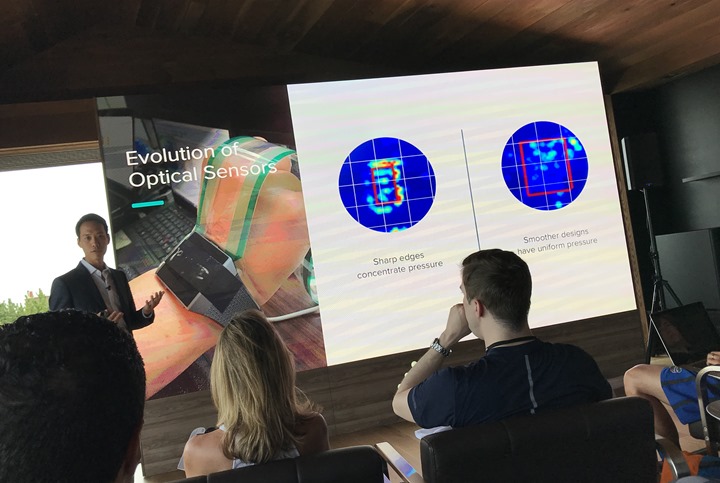
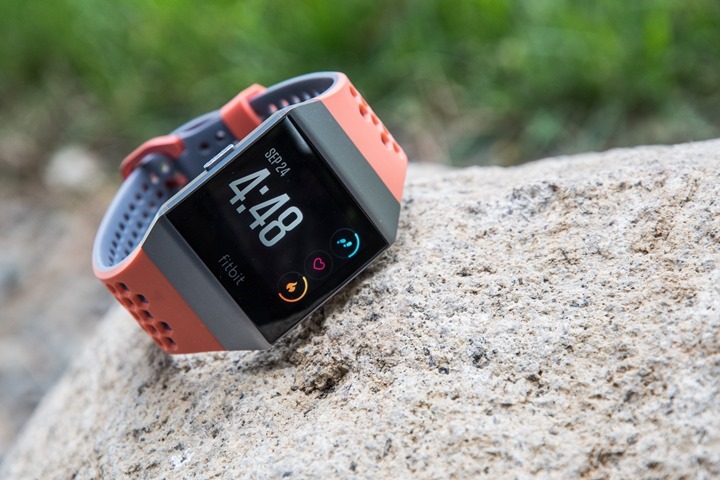
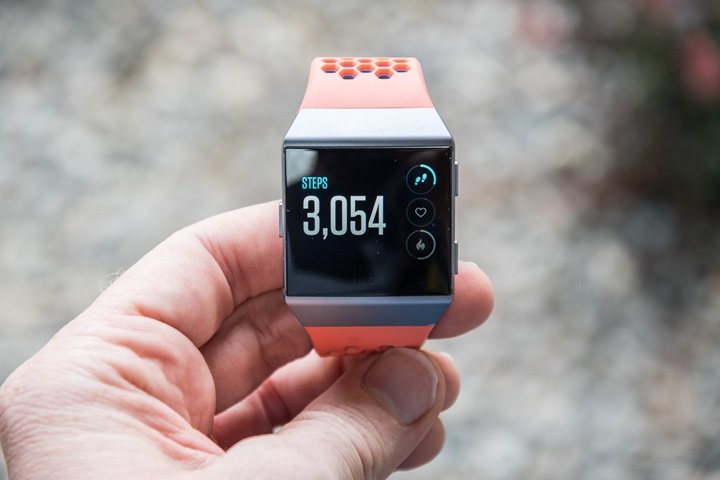
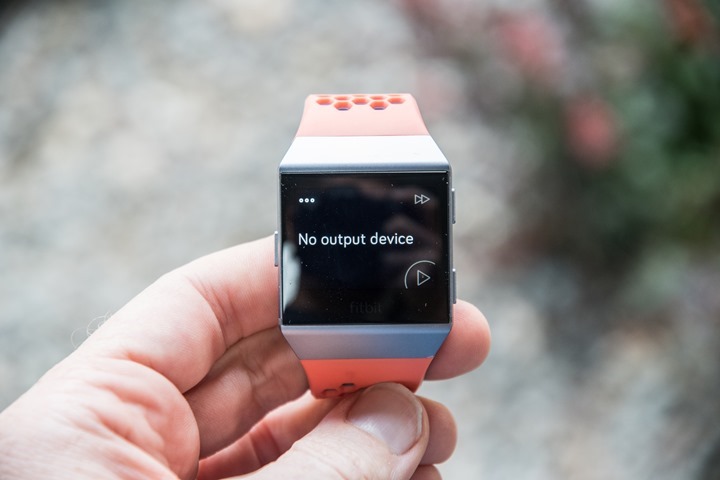
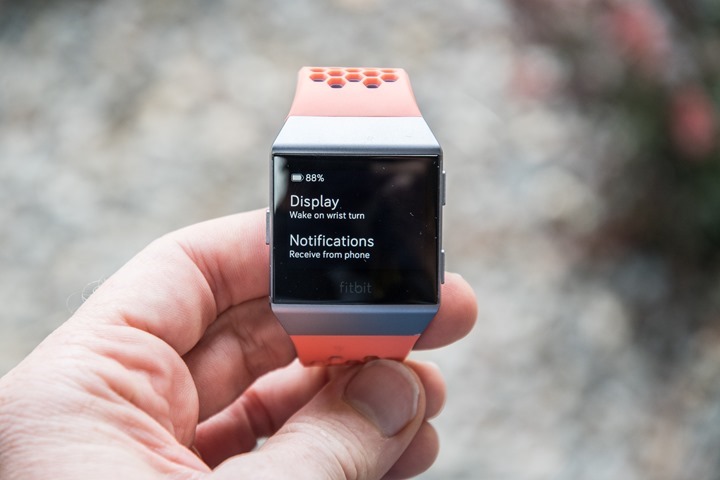
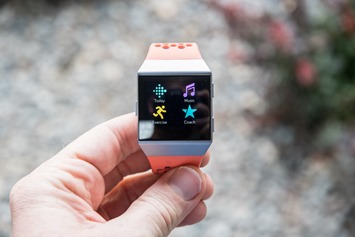
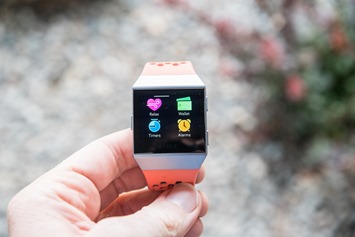
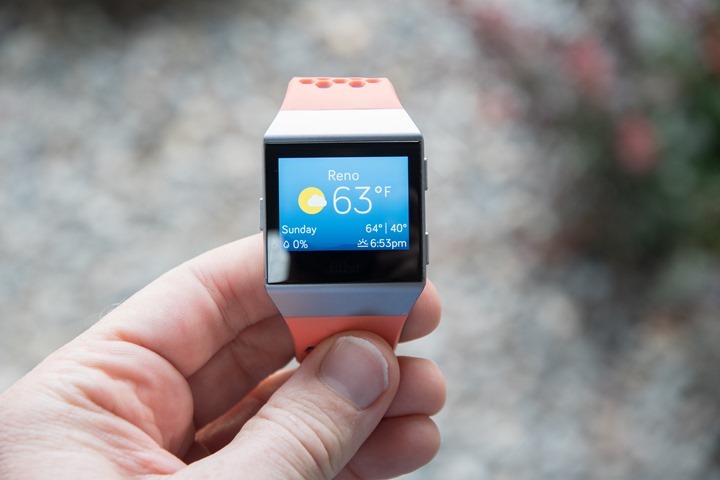

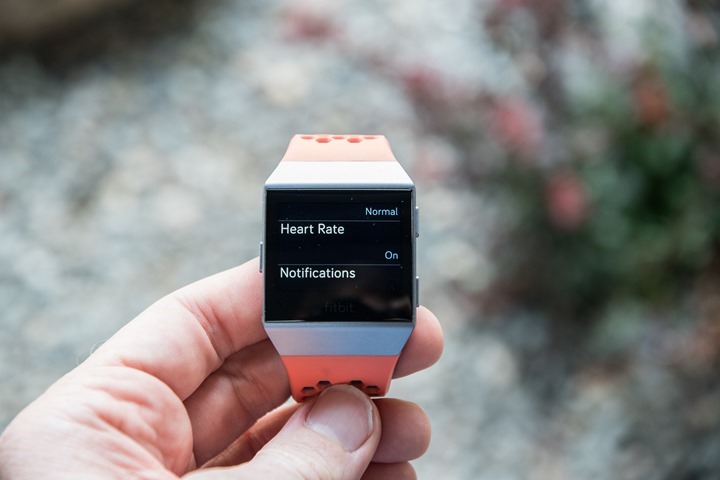
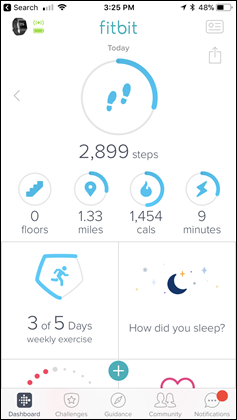
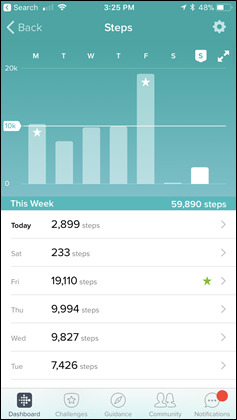
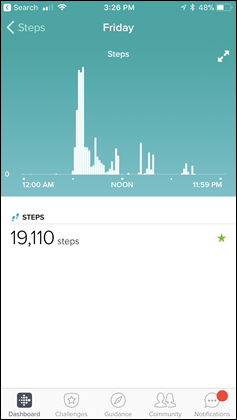
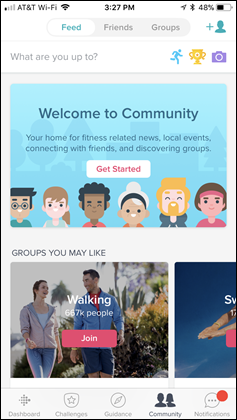
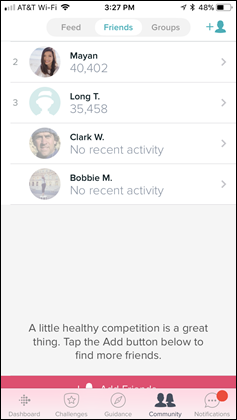
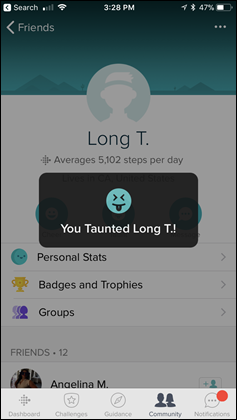
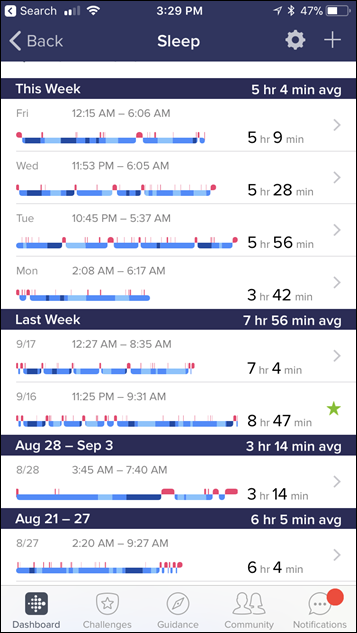
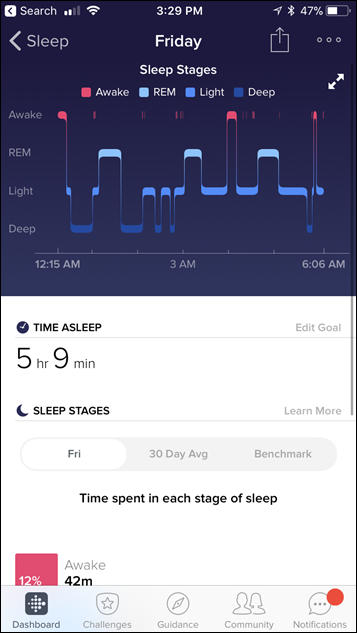
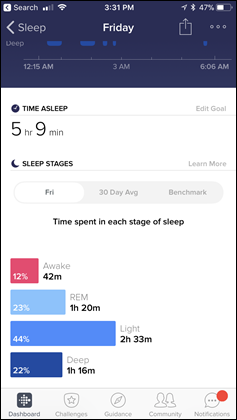
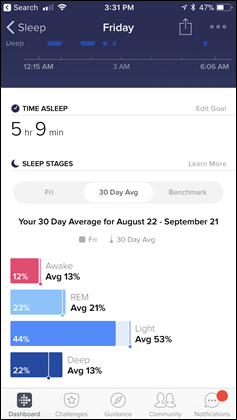
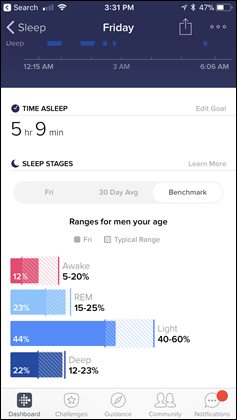
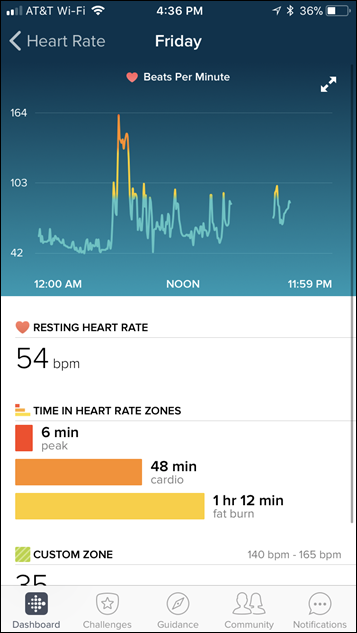
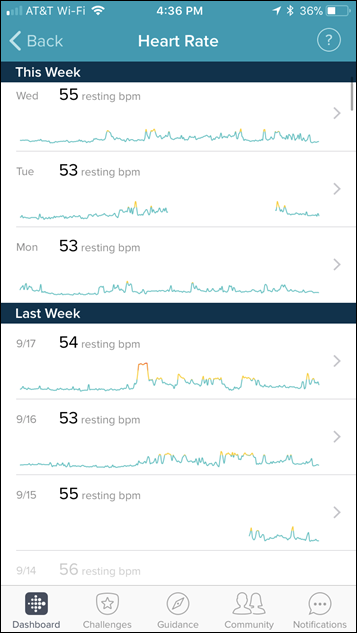
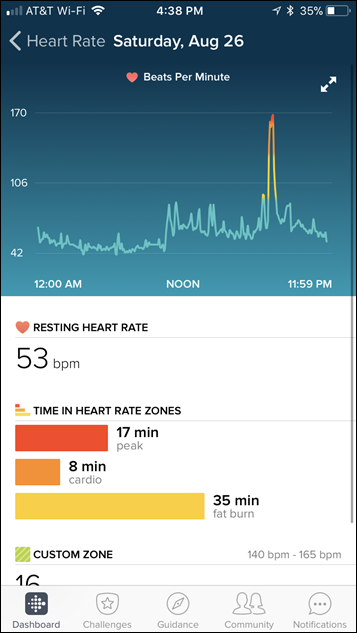
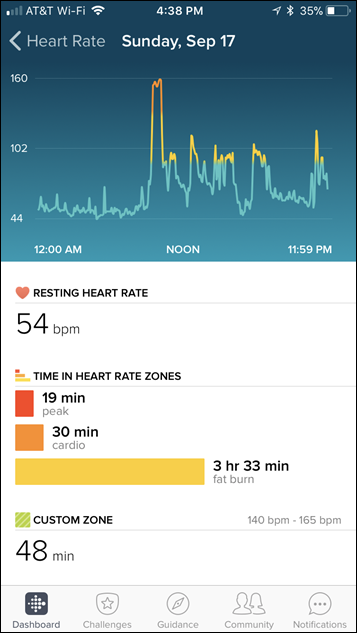
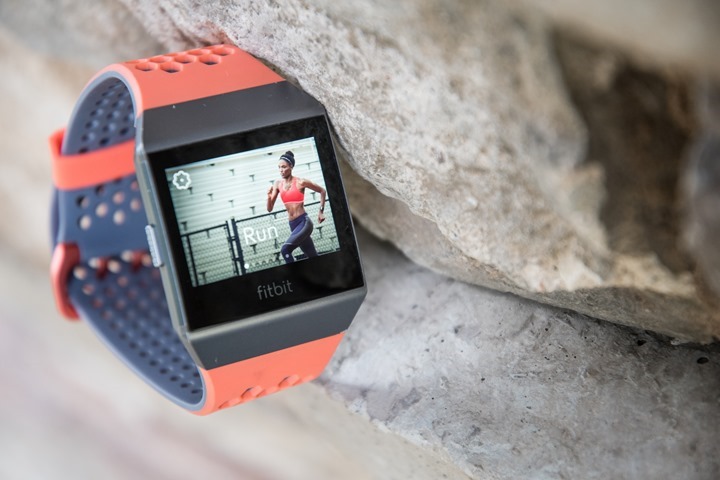
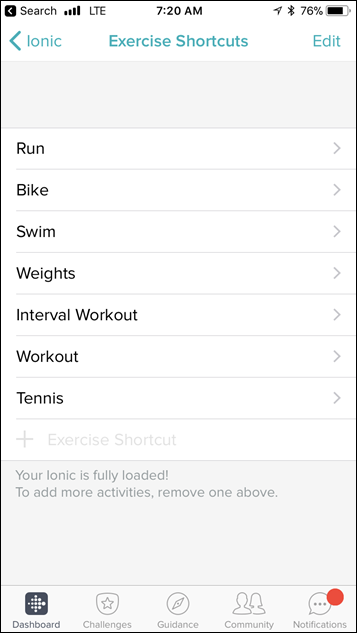


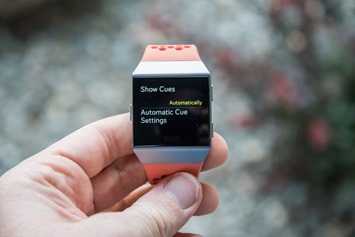
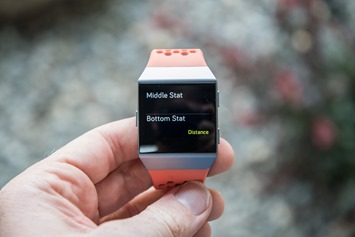
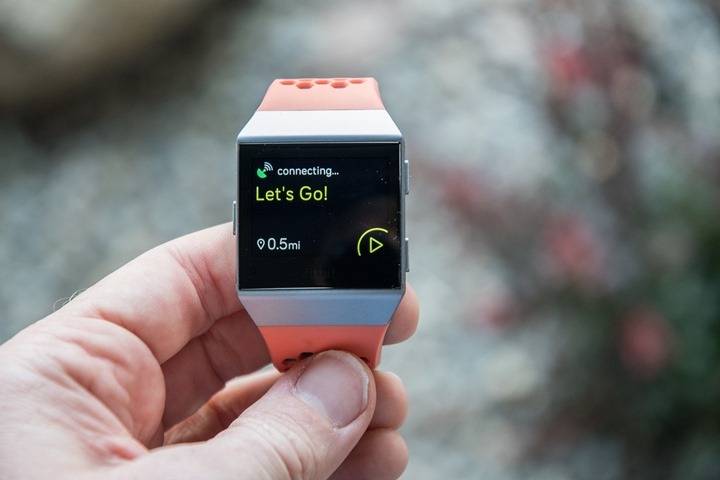
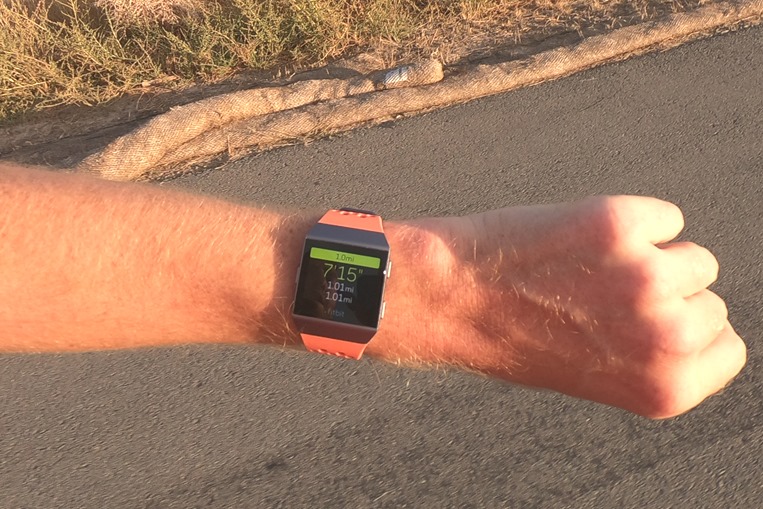
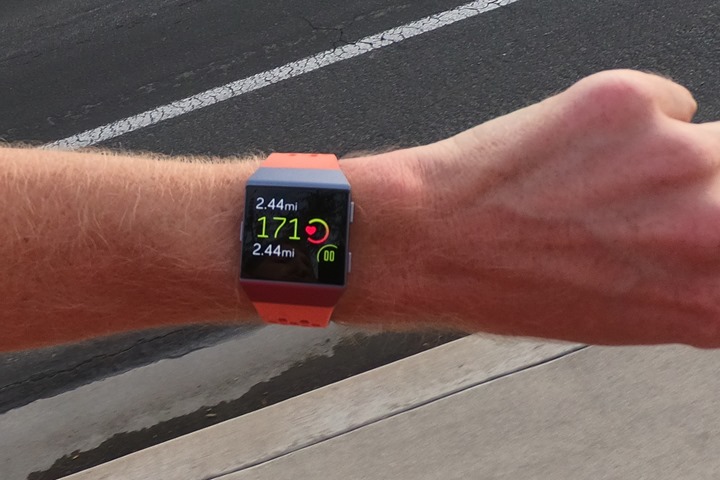
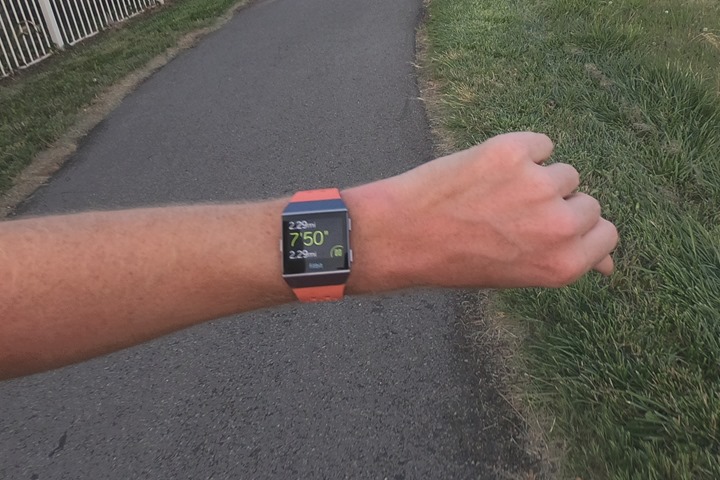
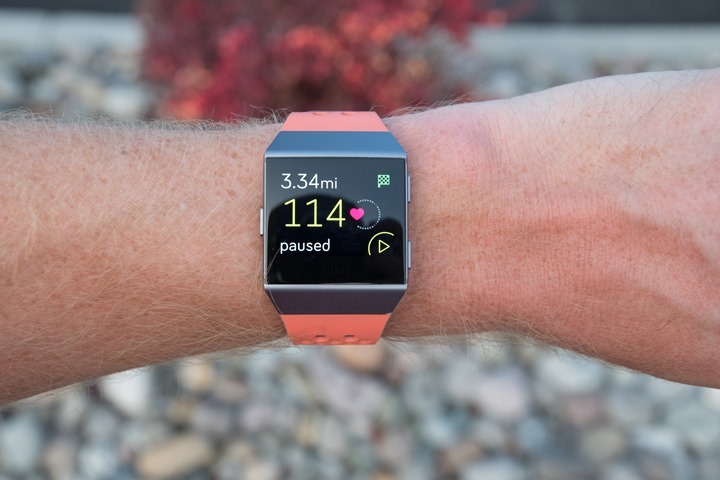


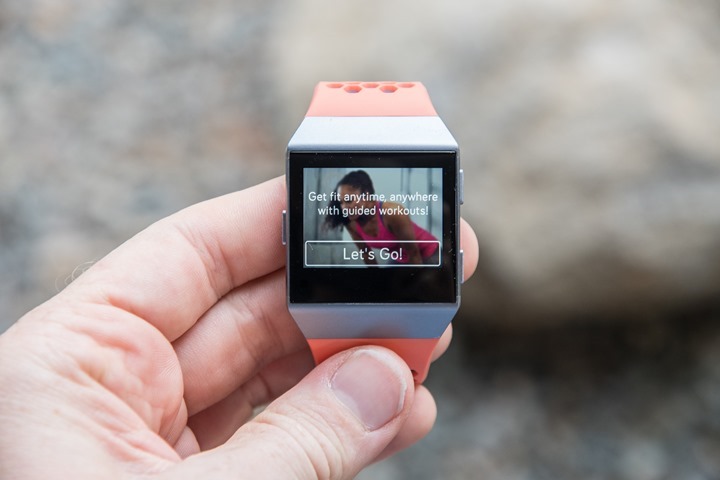
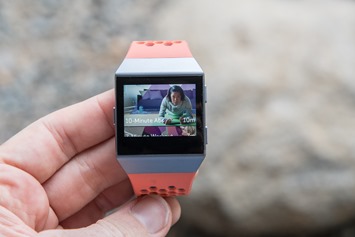
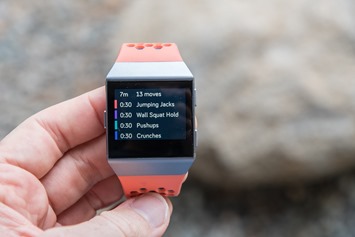
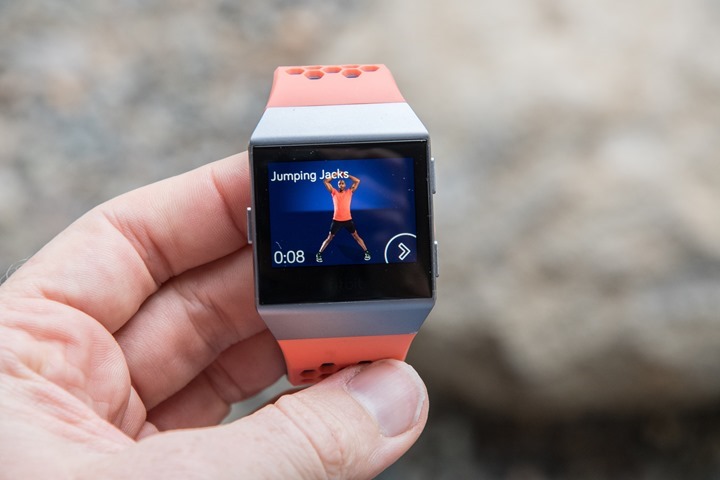
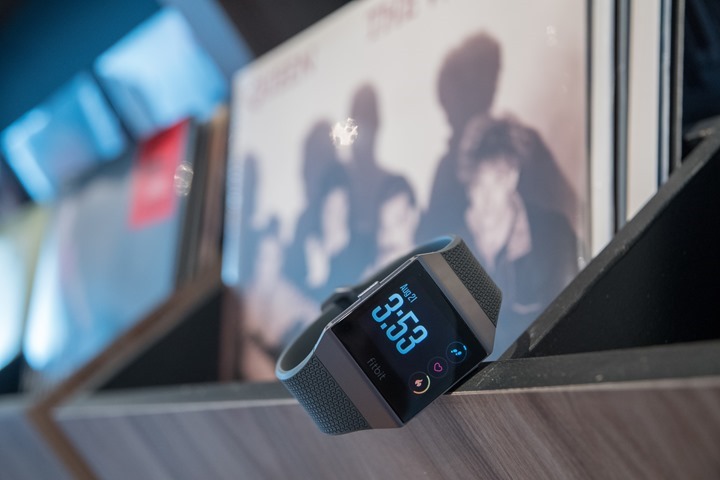
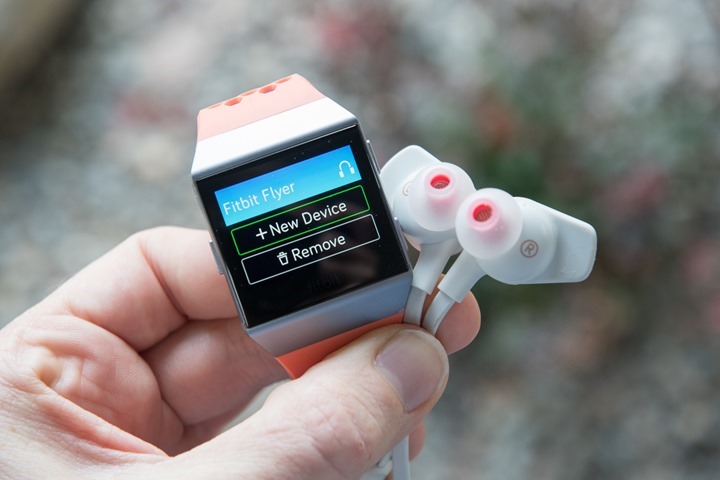
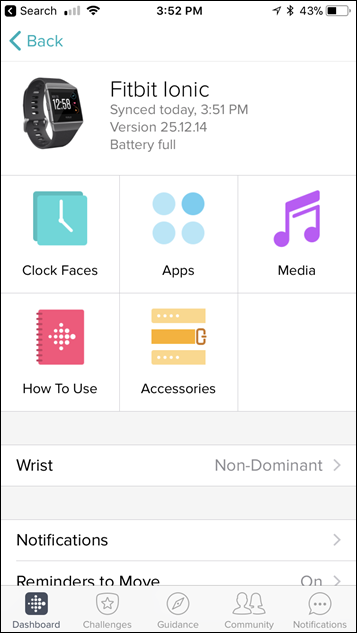
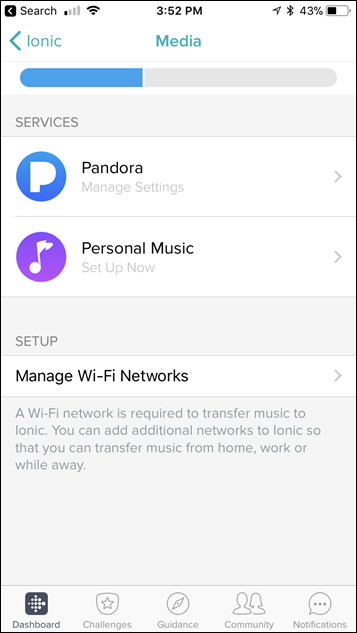
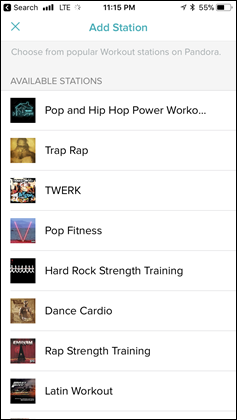
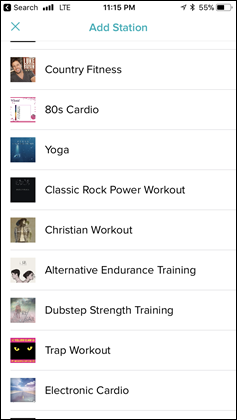
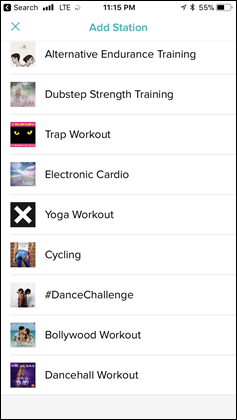
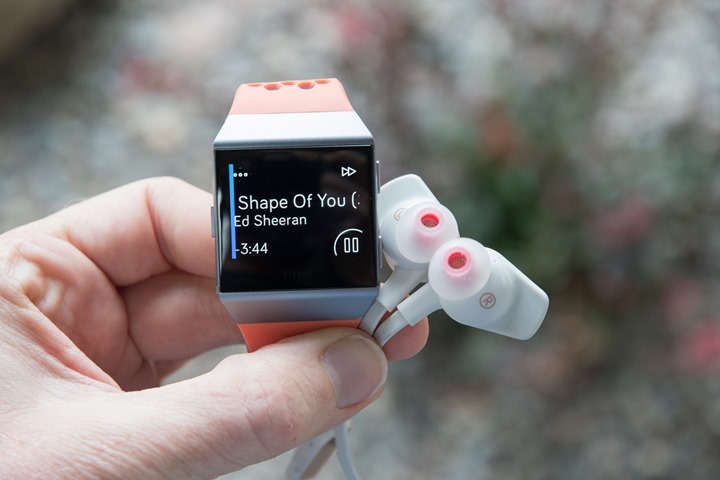
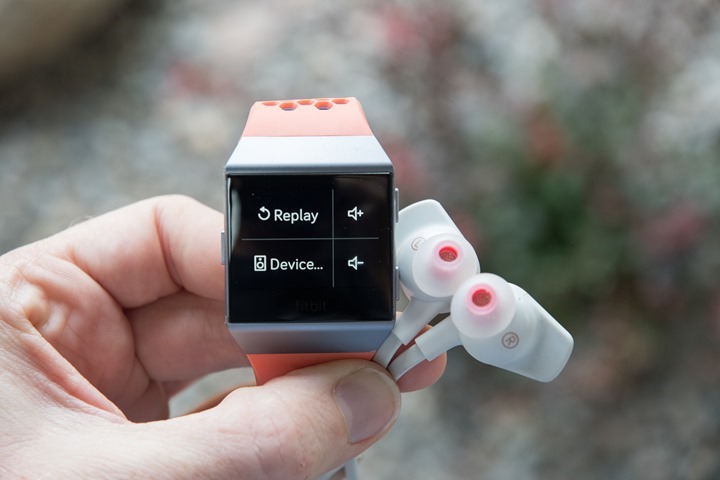




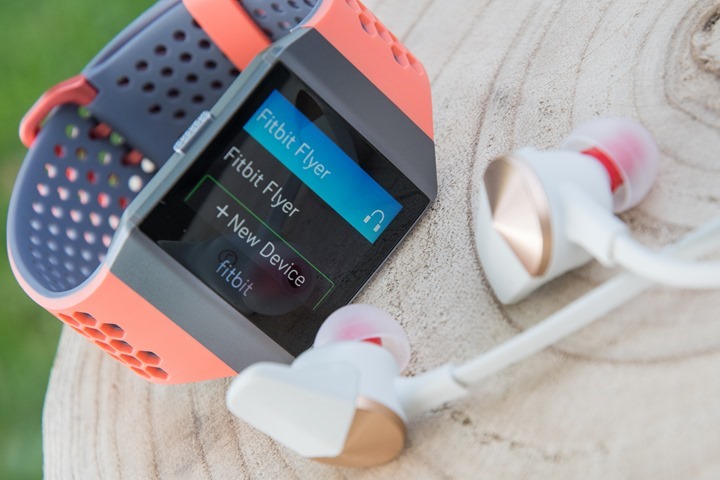
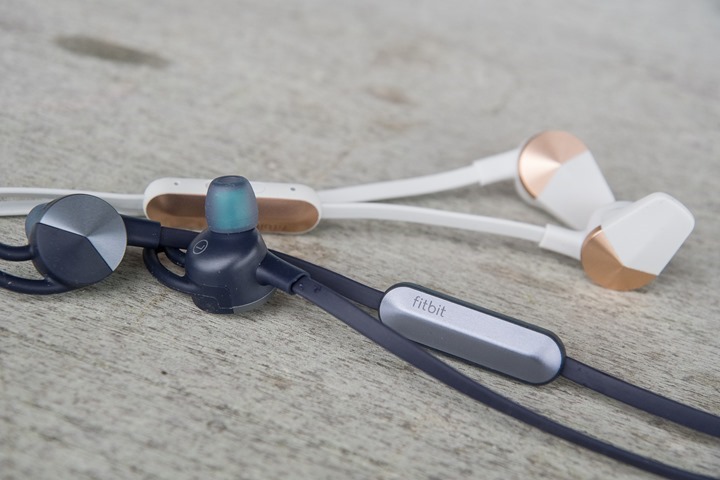
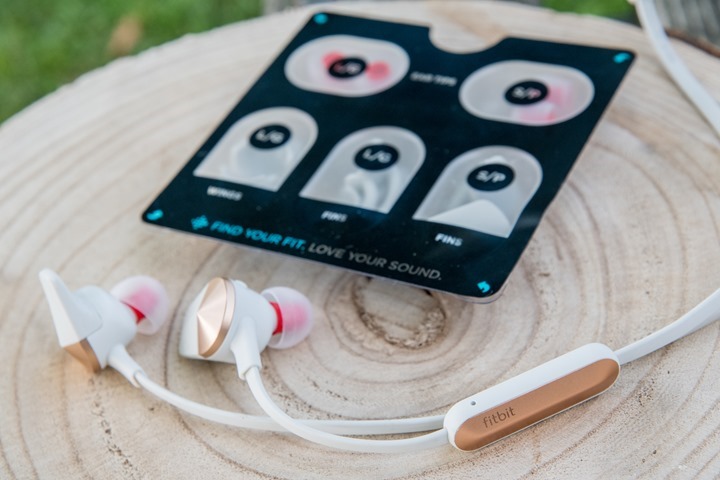
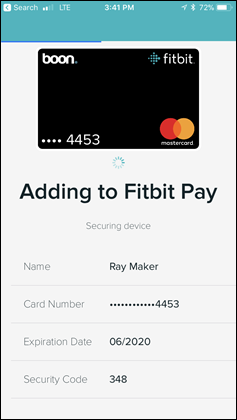
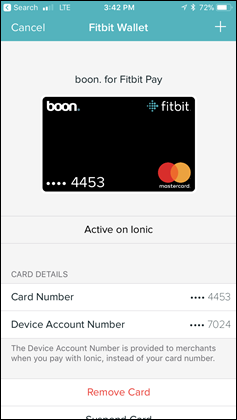
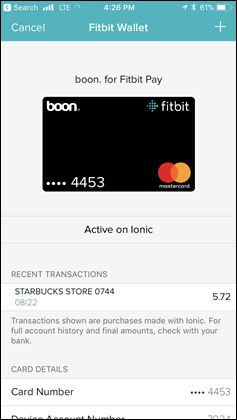
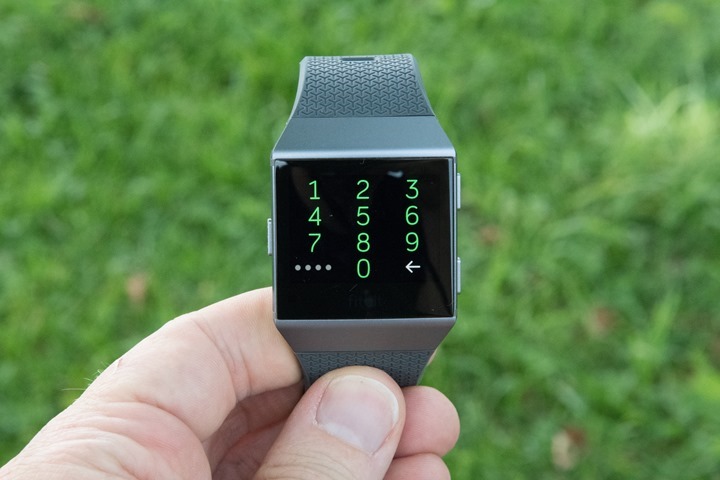
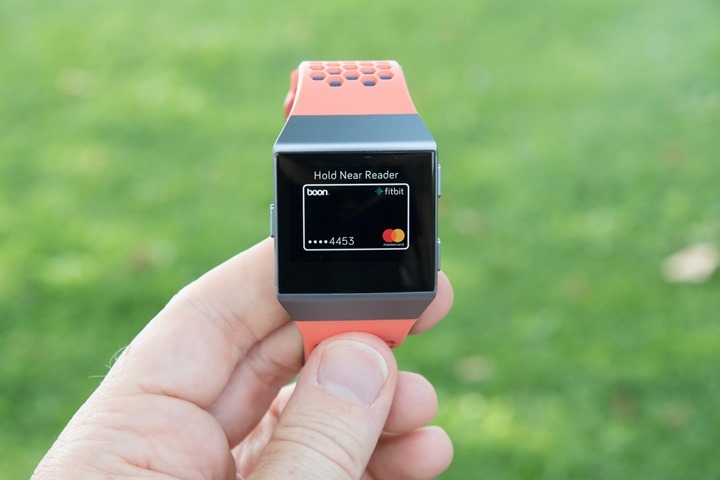
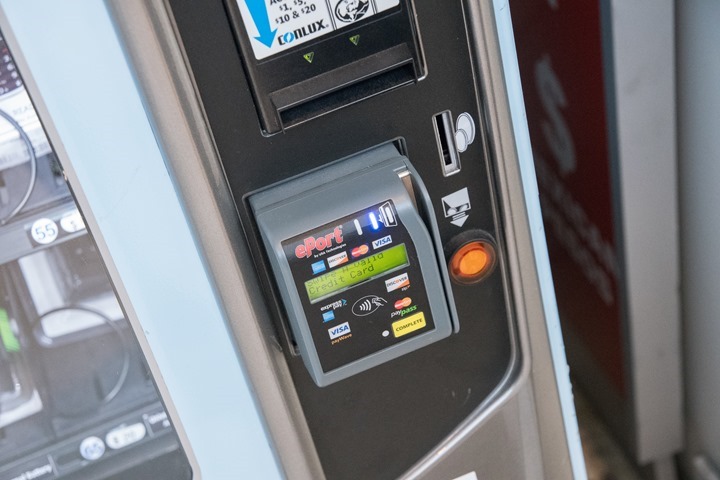
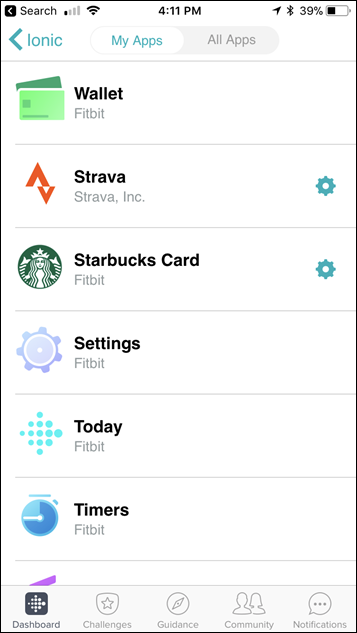
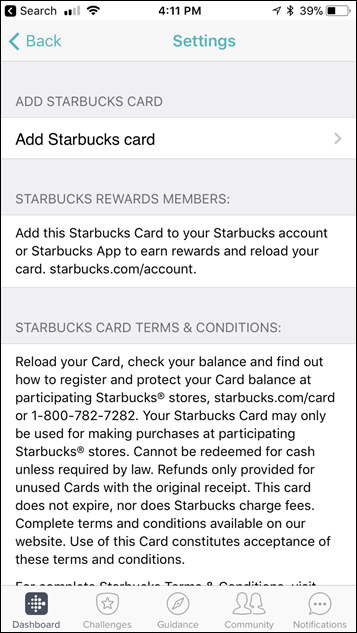
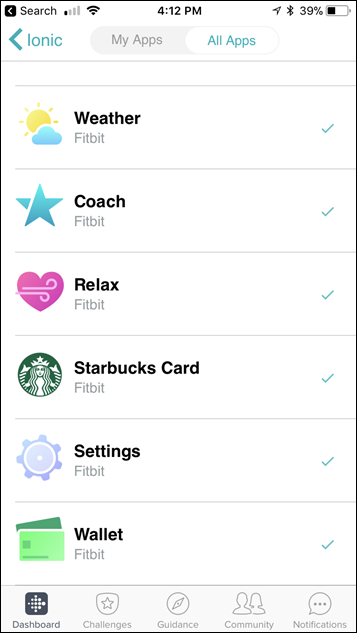
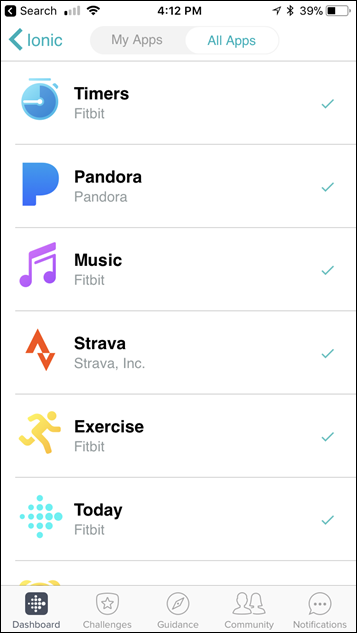



















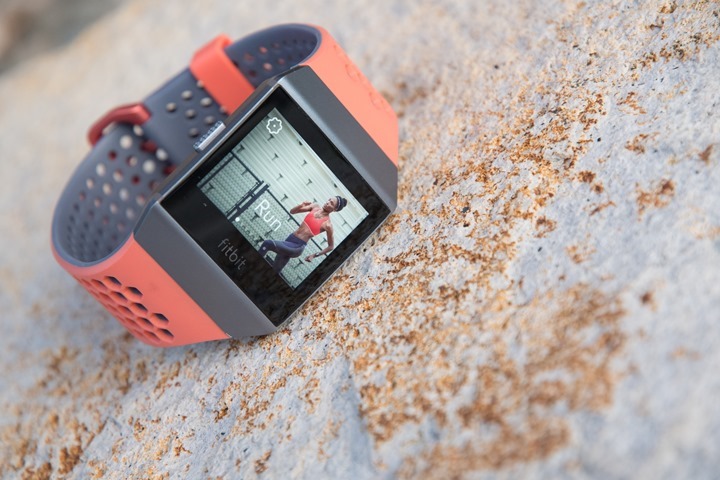





















Thanks for the review – I’m just about to pick up an Ionic as a daily wearer. The Ionic has had some mediocre reviews but I trust yours the most and I’m sold on HR and GPS accuracy. I am using Garmin(620) for all my athletic stuff and an AWS0 but I’ve been disappointed with the latter’s battery life. Fitbit is also the first company in a long time to introduce new health hardware, though currently unusable.
Before I pull the trigger I want to ask if you’ve or anyone else has seen better battery life from AWS2 or AWS3?
There’s slightly better battery life in AW2 and AW3 if you don’t use cellular. But I haven’t heard of anyone getting longer than what the Ionic is getting (actually, I heard of one person saying they got like 5-6 days, which makes no sense).
For reference, on my AW3 with LTE, I’m at 46% on the day, about 15 hours after charging it. I’ve made no phone calls on it, and it was in airplane mode for about 4-5 of those hours. I did however do one GPS-based activity for about an hour. No music usage. Putting it on track for probably about ~30hrs per charge. Or basically what I got on the AW2.
Thanks for the in-depth review. I’ve been eagerly awaiting the Ionic since it was announced at the end of August. My unit finally shipped today, so I’ve been refreshing your website over and over again, hoping the review would be up so I could see if I’ve made a good choice.
Having read the review, I’m happy with my decision and continue to be excited to get the Ionic on my wrist. I’ve used and enjoyed Fitbit’s products in the past, but I switched to the Microsoft Band and then the Microsoft Band 2 when those came out, because I’m a Microsoft employee. I was pretty happy with the Band 2 as well, but mine bit the dust a few months ago, and since they don’t make them any more, I’ve been without a fitness tracker ever since.
I was considering the Apple Watch, and the Series 3 does look really nice, but the short battery life is a deal breaker for me. Charging the Band 2 every couple of days was bad enough; from what I’ve read, the Apple Watch has even worse battery life than that. I also considered the new Garmin Vivoactive 3, but I don’t think I’m a serious enough athlete to need most of its advanced features, and I think I only know one person who uses a Garmin device, so I’ll get more out of the community aspects with the Fitbit.
Cheers,
Mitch
Ray are you sure about notifications? According to Fitbit site 3rd Apps notifications are supported in same way as in Fitbit Blaze.
Good point, corrected that. It’s wonky in that it’s not using the standard notifications center, as they put a filter inside that you have to use their app to white-list other apps. Just clarified. Thanks!
I agree you can like it or not. I actuall like to have control which notifications are shown and which not ;-)
FItbit says water resistant to 50m – which I guess means good for swimming but then in the specs it states IPX7 – which as far as I can tell means splash proof and can be immersed for 30min to 1metre which doesn’t really describe swimming.
Found it a bit confusing and asked on their FB page and got a response which didn’t really answer the question.
How’d you go swimming with it for more than 1/2 hr ?
It’s definitely 50m. They made a big deal of it at the launch event.
No issues with more than 30 minutes in the water.
Thanks for the top-notch review as always. As many others I am torn between the Ionic and the Garmin Vivoactive 3 (looking forward to that review!).
Does the Ionic finally support the export of HR data when you have no GPS signal (eg during gym workouts)?
Unfortunately no support yet for exporting HR data with no GPS signal. It’s something I talked about extensively with them though…
Thanks for the quick reply. That’s a big bummer. Could you elaborate slightly what the notifications look like from the main watch face? As in, are there indications on the home watch face that you have notifications?
The notifications come in as a vibration, and when you raise the wrist they float over the top. Alternatively, you can always swipe up (from the bottom) to see all past notifications (or at least, the most recent few).
I can take a better picture of it in the light. I took some pictures of them yesterday, but alas all of them happened to include phone numbers in them as they were from people not in my contacts list yet.
Pictures would be appreciated greatly. Thanks again!
How strong is the vibration intensity? Other smart watches I have used while cycling don’t have enough vibration intensity to be felt over the road vibration (eg. Garmin Vivoactive)
Intensity is pretty good in normal situations, but I don’t remember off-hand if I noticed incoming notifications while road cycling. I’ll try and pay attention to that tomorrow and get some to trigger.
HR exports now to .TCX
Without GPS too now?
Actually I’m going to say here that I am techcnially right.
A saved swim workout is saved with HR data
A TCx file can be exported and does exist once exported
It just contains…err…nothing.
So…technically right…but actually TOTALLY wrong ;-) well, probably not even technically right either.
I’m going to bed now to live with the sorrow.
Bummer. I was secretly hoping my late night pow-wow with them had resulted in a fix there.
Yeah, it’s been a longtime Fitbit problem. Exporter shoots out blanks…
Are Ionic and Vivoactive 3 resistant to sea water? Technically they are 50m water resistant, but I’d like to use them also in the sea without ruining them.
Both no problems with sea water. As with any watch though, a good rinse afterwards is ideal to prevent long-term corrosion of the charging points
Thanks for the review! One quick question, I’ve seen reviews for Apple and Google devices also but never the Samsung Tizen platform ones. I believe devices like the Samsung gear S3 or the Samsung gear fit2 (now there are new versions) are direct competitors of Apple, Fitbit or Google and would be interesting to know how they manage versus the competition. As far as I know, Tyzen platform is quite solid even beating the Android Wear platform in terms of sales.
Again great review!
I may check out some of them, considering the S3.
I’d be hesitant to use the term ‘sales’ insofar as how Tizen is doing, as many times those ‘sales’ of Samsung wearables are really just units given to people to people who buy phones as promotions. As such, I actually see almost no requests for reviews of the Samsung watches. Though, I have had a few more in the last few weeks, so it’s something I’m considering.
Add me to those interested in a Samsung Gear Sport review
i think the upcoming gear sport would be the most comparable to ionic, vivoactive 3 – link to samsung.com
+1 for review of latest samsung gear fit
I am wearing the Gear Fit2 right now, and the heartrate monitoring isn’t that great (once every hour if you are not exercising. continuous if exercising.) it is easy to transfer music onto it, and GPS is ok.. Battery life sucks.
Now there are the new Gear Fit 2 PRO and Samsung Gear Sport both offering basically adding the swimming as the new feature through Speedo app.
Despite that, I believe Samsung Gear 3 is still an interesting device to be reviewed.
The strong points are that it has GPS, Altimeter, Barometer, heart rate monitor, water resistant (not for swimming), Spotify support (even offline), you can make calls, activity tracking, sleep tracking, NFC, very nice OLED screen for indoor/outdoors, all kind of notifications and LTE in some models. Battery is also great compared to Apple or google models (3/4 days easily) and Tizen OS works very smoothly and intuitive. As you can see, many of the “new” features included on the apple watch as an example, you can find it in this 2016 model.
The weak points are:
Design is quite big (probably not for everyone)
Lack of apps. Unfortunately the developers support is not near as good as Apple or Google. For example there is no native Strava app. Is true you can export training’s from Samsung health to Strava but the data is not reliable..
Notifications support is good because you can receive/reply messages from the most popular apps but there are limitations on what app for example. If the same person sends you several messages you can only see/reply the last one.
The Samsung software for running/biking again is not reliable. Many times the results clearly are not correct due to Samsung wrong decisions about how a GPS must work. A Garmin seems much more reliable.
I hope it helps Ray. Looking forward for your expert review of the Samsung devices!!
I just boxed up the Gear Fit2 pro to return. The GPS is consistently inaccurate on a run I do every.single.day. I know how far it is, and it twice came up .25 mi short. That is unacceptable, since it throws off pace information, total miles for the week, etc.
.25mi on roughly how far (i.e. .25 miles on a 3 mile run or a 18 mile run)?
Sorry for not being more verbose and specific. I run the same 4 mile course each day. It tracks anywhere from between 4.0 and 4.09 on my phone (Samsung GS8+) and my ancient Garmin forerunner 205. My Samsung GS5 also came in at about the same as the GS8+, with maybe just a slight bit more inaccuracy, skewing a tad high, but never more than tracking it as 4.11.
Cool, no worries, just curious.
The biggest problem on Samsung devices is the software measuring the sport activity. As an example, it starts measuring a running activity before getting the GPS signal. this can cause a lot data reliability problems on the first miles / kilometers. for short runs it ruins the information.
I found a solution using non Samsung apps like RUN4GEAR. On this app you can wait until the GPS signal is connected.
Thanks for the tip, Alex. I’m using MapMyRun on the device, which gives me the GPS feedback, so I can wait until I see ten icon as a solid green before I start my run.
I read on XDA last night that perhaps the device, if it is in contact with my phone, will use *that* GPS first. So maybe it grabs my phone GPS, then once I’m out the door, loses it and I lose the .25 while it is trying to reacquire it’s own signal.
I might take it back out of the box and see what I can do to force it to use it’s own GPS exclusively, because this little gadget had a lot going for it with regard to what I am looking for in a device.
Hi felicia. Normally if I’m planning to use the GPS watch I make sure the phone is not linked anymore (otherwise it uses the phone GPS). When I leave my place to go running, the phone is already far away in my desk so there is no danger is still linked. One thing you can do is turn off the Bluetooth or activate the plane mode on the watch making sure the GPS phone is not being used.
Endomondo software works well but I wanted to export my sport activities to Strava. Unfortunately there is no Strava app and Samsung app is a disaster exporting the information to Strava. That is why Run4gear was a good solution for it (unfortunately is not free but well….)
Thanks, Alex – I’m going to give it one more chance tomorrow. I’ll turn BT off on my phone, since I need it to still be turned “on” on the GF2P because I still need to be able to pair to my earbuds.
Welp. In the end, the Samsung still gets returned. I hiked yesterday; opened the MapMyRun app on the watch, let it get GPS from the phone, then turned off BT on the phone. Reacquired the GPS fairly quickly and did my usual 5mi hike, which came in as 5.26. I could forgive that, I guess. Then this morning, tried to use the watch for my run without first having grabbed the GPS from my phone, and it never acquired a signal after waiting 2-3 minutes. That’s just too fiddly for me, if I have to do the connect/disconnect dance each time I want to use it. Ionic is inbound and will have it tomorrow. Can anyone confirm/deny that the Ionic uses its own GPS exclusively? Or do I have to force it to somehow use its own and not the phone’s? Thanks!!
Add me to the list of folks for the Samsung Gear Sport review. I have been vacillating between the Fitbit Ionic, Garmin Vivoactive 3 and the Samsung Gear Sport. I currently have a Fitbit Surge and the screen swipe functionality now only works intermittently. I’m getting a little frustrated with Fitbit’s device life expectancy of 1.5 yrs…..
+1 for the Gear Sport. I tried the Ionic for 2 weeks. It was unbearable. At best its alpha software. The device itself seemed nice, but the software was just WOW bad. Sluggish… I did 16 factory resets in 2 days… Local music sync would only work 1 time after a reset, then it would never connect again. FitBit lost a long time customer with this release.
For me, its down to the Gear Sport or the Apple Watch since Garmin decided to ignore local music.
All my wife wants in a watch is a nice looking running watch, with decent GPS and the ability to download Spotify music offline, and listen to it whilst running with Bluetooth headphones.
I don’t understand why Spotify are so slow on picking this up! It’s not available on Android Wear or on the Apple Watch (but apparently can be done on the Samsung Gear S3, but that’s “too manly” for her).
The first company to offer this will have my money.
FWIW, I have a Sony Smartwatch 3, and I can download music offline using Google Play Music, but I’ve jumped to Spotify, as GPM sucks. Also, the GPS on the SW3 was appalling.
Gear Fit2 Pro?
I picked up a Mighty Audio which is a little Spotify player that’s looks like the old iPod Shuffle. Works with Spotify. Maybe check that out?
This looks great! Thanks Chris!
Which color variation is used in the unboxing video and the custom pictures? Is that the silver or the charcoal model?
Nice review, thanks!
Thanks for the review!
Any chance that Fitbit is going to add in notification responses like Pebble and Android Wear? I use this extensively on my Pebble today.
How is screen visibility in bright sun, in dusk, and in darkness?
No issues there at all. Obviously, it’s only on-demand, but it’s super clear for me.
My comment isn’t specific to this watch but to Fitbit overall. Lately, it seems that their attention to detail has deteriorated. I still wear a Flex to sleep in for the sole purpose of the silent alarm. For the past month or so, since an app update, I (and others on the Fitbit boards) get logged out of the app on a daily basis and have experienced horrendous battery drain on our flexes; they were working fine before the update!
Fitbit, used to have fantastic customer service but it’s been lots of radio silence on this issue despite the complaints.
Is it possible to track indoor rowing?
I’m interested in the ionic and the vivoactive 3 and as far as i’ve seen, theres the possibility to track rowing with the vivoactive3.
From the Design Standpoint i like the round watch design way better.
But no music on the garmin is a bummer.
and i don’t know which platform suits me better, so it’s quite hard to decide…
So you swipe “from the left” to get to settings and “to the right” to get to the apps?
Yeah, I guess it would be ‘from the left’ and ‘from the right’. Though the menu then slides ‘to the right’. :-/
Great review, but I don’t see any mention of an altimeter. Does it have one?
Yes, barometric.
Great review, as always!! I’ve been waiting for your review to purchase the Ionic and now I’m more inclined to do so. You noted that the HR data is not exported for non-GPS workouts– does that mean that it does not record into the FitBit app? Also, is it able to track distance for gym/treadmill exercises? Thank you again and looking forward to your updates, especially with more apps coming to the Ionic, hopefully.
It does indeed record it, just doesn’t export it. Been a silly long-standing bug for years.
Great, thank you Ray! Is it able to track distance and pace ran on a treadmill?
Yup, it supports indoor running.
I think the Ionic resetting during the run is a more general issue with Fitbit’s software. This has been happening to me with the Blaze for a few months now, and a replacement from Fitbit made no difference. It seems to occur only when I glance at a lap notification. If I keep my wrist down and don’t turn on the screen it never resets.
Just curious whether the angled back of the watch, wether that makes it rock or causes a pressure point?
Is it possible to build or import structured running plans? Think this would be great and could help attend some average runner needs. Just having the HR data during the run is too basic.
Furthermore, is there any possibility to connect to bluetooth equipments like stryd in the future?
Thanks for the review
A) No method to import/create structured anything at this point, at least not by an end user. However, app developers could go in that direction.
B) Not at the moment. Again an area that app developers may be able to go in.
Cheers!
Regarding (B), I doubt app developers will be able to do anything here. AFAIK, the JavaScript SDK doesn’t provide direct access to the Bluetooth stack.
Not today, no, but it’s being discussed.
I didn’t see anything in the post about connecting the Ionic to ant+ devices. Can it do that? I’m really torn on getting the new Vivoactive 3 or the Ionic. Looking forward to your post comparing the 3. Seems like the screen is pretty dull on the Vivoactive but the fact that it doesn’t have internal music storage totally sucks. Then again if the Ionic can’t pair with ant+ its basically game over.
No, no ANT+ ,and no sensor support.
Will it support Bluetooth foot pods?
No. :(
I still feel like FitBit has no clue on traditional sports especially running. I realize the majority of FB users get them through some deal at work and just want to count their steps but it still seems like running is an afterthought to them. Have only one metric that changes seems inexcusable in the day and age.
Not to mention the design already seems a few years old. I don’t get the back that isn’t flat. I know they will sell a bunch. At a recent race I saw a number of Blazes. I see them all the time. But I just think for serious runners. There is little to get excited about.
Where does the samsung gear whatever fit fall in the mix? Not really notable at all?
Thanks for a great review!
Which activities can the Ionic auto detect?
Cheers
Kent
Ray,
In the Exercise and Fitness modes, can you program/differentiate warm up time? Like for circuit or interval training?
I noted on the Charge 2 review you mentioned that wasn’t an option, but there was no mention on the iconic review at all. Or I missed it.
Thanks for your great reviews.
Rob
No, nothing I’m aware of. I’ve gotta call with them in a few hours – so I’ll double-check then as well.
This is so cool! I’m so hoping that Overdrive (audio books from library) has an app here. I will buy this watch in a heartbeat if I can do audio books without lugging around a phone.
I am hoping so, too! It’s one of the key things I was thinking about as I’ve considered an Ionic. They created the app for the AppleWatch when it came out, so I’m hopeful. I was thinking though….since at least some of the books are downloaded as mp3, could they not be added to a playlist which is then uploaded to the watch? Annoyingly more steps each time I get a new book, especially as quickly as I can go through an audiobook, but it’d be worth it to me if it worked.
My understanding is that a recent update no longer requires you to use iTunes or Media Player playlists. One can simply drag and drop using the ‘ionic file explorer.’
So… yes, you should be able to drop just about anything on there. Including audiobooks.
I love the review thanks. If I’m being very honest, I know lots of guys from my gym that either won’t be getting this watch just based on Spotify being left out. I’ve been waiting for fitbit to release a watch that allows me to download music because I hate taking my phone with me while exersizing. I’m still uncertain what I’m going to since music is the most important thing to me. For the record, I just cancelled my long term account with Spotify, they have 100% lost my business based on the fact that the spotify app will not be included out of the gate. I don’t think Spotify, or fitbit really understand just how many people have been waiting for this and it’s a huge disappointment. I can sadly say that I’m a pandora subscriber at the moment and I’m embarrassed to say this since I loath pandora, but that is how much I want my playlist in the watch.. I’m pretty sure that spotify can earn my business back once they get with the program, but who knows I may grow to like pandora and in that case this will be egg in the face of spotify for letting me slip away..
Yeah, I’m a Spotify guy myself, so I feel ya.
And honestly, in talking to James Park (CEO) about it, I think he feels ya as well. While he wouldn’t say thing directly, my gist from the conversation is that we’ll probably see expansion to other music platforms rather quickly. I’d personally be surprised if we don’t see Spotify on the watch before the end of the year…
One year later… It doesn’t appear that the CEO cares. I had settled on the fitbit until luckily I saw a pros and cons list. When I learned my listening options would be pandora or deezer, I renewed my search. If I’m going to have to carry around my phone anyway for music, I’ll just go with a more sports centered watch.
Dear Ray,
thanks for profound review. Do You think there will be any use of the Ionic for downhill tracking in the near future? Vivoactive 3 has it, but i like the RHR feature of Ionic. It also seems to me that the display of Ionic is more readable/informative?
It also has gyroscope sensor – is it an practical advantage?
Cheers
Jan
Sorry, should be “downhill skiing”
Please Subscribe me to the newsletter
Not sure if I’ve missed it, but do you know what the approx battery life is when tracking a GPS activity?
Thanks for another great review again.
may I ask… can you use the timer feature in the ionic while tracking workout? or music, while tracking biking?
Thanks for the review. Like others, I’m torn between the Ionic and the new Garmin Vivoactive 3, so I definitely welcome any comparison points. I’m disappointed the Vivoactive doesn’t have on-board MP3 capability, which means I have to bring my phone for music. But from what I can tell the Ionic is not an “always on” display and I think I would find that even more annoying through the entire day!
Hello Ray, thanks for the detailed review. I read it while having a Pebble on the left wrist and a Fitbit Flex2 on the right wrist, and from this vantage point I am disappointed. I won’t be using a Ionic anytime soon. As much as this may be difficult to see for those who never used Pebble, apparently the Ionic totally misses the notification/reply abilities native for Pebble from very beginning. This is surprising from Fitbit, a big and knowledgeable company who acquired Pebble just to shut it down and get what? A SDK? Replying to text and Whatsapp messages by just pushing 2-4 times a button on your wrist is indeed invaluable, e.g. discreetly in a meeting. Fitbit please call again when you can handle this.
Yes! I really would like to know if notification anyone to reply are in the works.
There’s no notification reply at this point.
And yup – Fitbit’s goal with the acquisition was purely talent and some IP. That’s why they didn’t even take any of the debt from the company either. It allowed them to jumpstart things for Ionic at a relatively low cost/time investment.
1. I too have noticed on the past with the Blaze that my RHR is higher by 5-7 & other times was off the mark on HR in runs
But overall your saying this one has more accurate HR? save the RHR
2. I notice on most of replies there’s usually a mention of Strava but not of Run Keeper, is it that RK no longer as widely used as a running app as it was in the past?
2a. After a run will the Ionic upload the data to Run Keeper? I.e. GPS, speed, HR etc?
3. The blaze always too several attempts to sync in the morning to see my sleep data, did u find any sync issues?
4. Do u think there is another 24/7 HR smart watch out there or coming soon that we can be on the lookout for?
Or is the fitbit the main 24/7 HR watch?
Thank u in advance, as with many I grateful to ur in depth reviews
Thank you for the review!
I have used a FitBit Blaze for 18 months and recently grabbed a Spartan Trainer. The Trainer is giving me headaches with a bleeding backlight, slightly wayward GPS and issues with 24/7 heart rate monitoring. The lack of decent HR and Sleep logging is annoying too.
Being someone who uses technology of this type to maintaining a certain level of physicality and trying to gently push myself with a couple of invisible physical disabilities I use the long term 24/7 HR and Sleep tracking to identify trends as well as the standard workout facilities for Walking and occasionally Indoor Swimming.
£300 for the Ionic seems a lot compared to the £160 that the Blaze was and the £219 of a Spartan Trainer.
Might move back to my Blaze depending on Suunto’s support response.
Hi Neil E,
I also hesitate to buy a Spartan Trainer.
Since October 17 has been available an update for Spartan watches.
In the change log Suunto states that now there are some new features rgd to Sleep Tracking:
– Sleep summary
– 7 days sleep history
– 7 days sleep HR average (available only in Wrist HR models).
Are these working ?
Are you satisfied ?
Thanks,
Zsolt
Thanks for the great review. I’m very interested in the Ionic but the only thing holding me back is lack of Spotify support (as others have mentioned). If I’m spending this much for a fitness/smart watch I want to be able to leave my phone at home while I run and still be able to listen to tunes via bluetooth earbuds. The samsung gear sport looks very promising from a variety of perspectives and it has Spotify (even offline) which may drive my decision to purchase that watch. No price or release date from Samsung yet, just saying holiday time frame. Hopefully the Ionic picks up spotify support (including offline) very soon and it may drive me to purchase the ionic.
I frequently do interval running sessions and typically log my intervals manually on my current garmin simply by pressing the ‘lap’ button when I start/end an interval. Does the iconic have this manual ‘lap’ function and is it by touchscreen or a physical button? I have heard from friends with other garmin watches that the touchscreen is not always responsive espcially with sweaty hands. Is this the case for the iconic?
Also, when analysing run data can you see the stats for each interval rather than just the total time/distance/pace etc?
Thanks!
Such a helpful review as always – thanks. I second Natalie’s question and would be keen to know about lap options. Also I occasionally use Garmins workout functions to do a customised workout, e.g 8x400m with a set rest. Wondering whether future apps may allow me to do this on Fitbit too? Thanks.
Hi, just learned from the Verge video review that this had a SpO2 sensor. This is major for me as an asthmatic athlete, I already use a fingertip sensor to track my %SpO2. Can you confirm this is right, and do you know how Fitbit plans to use this data?
It does, but it’s not being used right not in any public manner.
Aaargh Ray! I am checking every day for your Fitbit Ionic vs Garmin Vivoactive 3 head to head. Soon??? And/or the Vivoactive 3 full review?
I have a Fitbit Ionic coming on Monday based on your reviews of both – please review them soon so I don’t have to buy the Garmin!
I am primarily a cyclist (with a Garmin Edge and a vivosmart HR also have Apple watch 1), but I’m also a fitness & spinning instructor, and sometimes hiker and really value your opinions. I really would like one platform, but am up for changing to Fitbit but I am just not in love with the “big box” look of that watch.
BTW, if you have an Apple iPhone you will not be able to respond to messages from the Garmin vivoactive 3. I have read the user guide and it only works for the Android phones. Here it is from page 2 of the manual (yep I read these things before I buy). So this is not a deal breaker for Fitbit Ionic.
“Replying to a Text Message
NOTE: This feature is available only for smartphones with AndroidTM.”
I like the fact that the fitbit ionic can read SpO2, but as a Garmin forerunner 935 user how realistic is it for me to switch to the Fitbit ionic? I am a serious athlete – by that I mean, I use power meters on my bikes and do track interval workouts and occasionally sit on my bike for 5 plus hours. Will any other watch other than a Garmin top end fit my needs? Ant+ and all?
The Ionic doesn’t do anything with the SpO2 data at this time, it’s not exposed to a user in any manner at all. It’s just something Fitbit says they might leverage down the road.
I think if you went from FR935 to Ionic, as a serious athlete, you’d be pretty disappointed. I don’t think at this time there’s really any other watch that fits your needs.
Thanks Ray, I always end up with a Garmin. I like the look of the Suunto and Polar watches, and really don’t mind switching to a product that fits my needs better, but as you said, it’s gonna be tough to find something better than the Forerunner 935 for now.
THIS REVIEW ALSO COVERS THE SETUP AND A 50 MILE BICYCLE RIDE, SO READ THE ENTIRE REVIEW!
The main reason I am returning it is because it is a BRICK! It is so huge on my arm that I just can’t keep it. I am a 5’7″ woman with fairly small wrists and this is just a deal breaker. Sorry Fitbit, I think you have a fairly good product here, but it would have to be at least 2/3 the size of this beast for me to even consider keeping this. Perhaps a good size guy could carry this off, but not me.
This disappoints me as I do love the APP and website and I really wanted to love the watch as well. It certainly is not a replacement for the Apple Watch because of the size.
With that said, I thought perhaps I could overcome the hugeness and perhaps keep it for activities. But alas and alack – too many other issues.
I have only used it once (last night & today) but here is my (humble) opinion. BTW, I am not going to do any further exercise with it because I’m really not going to keep it. But, please read on to give you both the good and the not so good news.
– I got it yesterday and found the setup fairly easy, even with the few glitches I experienced.
– The screens are fairly intuitive after a bit of practice and they are bright, colorful and extremely well designed. I really loved the design of each screen.
– Sleep tracking last night was absolutely spot-on.
– I tried the music sound management to raise and lower the volume from songs playing on my iPhone 8 and it worked flawlessly. Love that!
– The timer and alarms work just fine, so that must have been fixed.
Now here is where it started to break apart for me…
– I bicycled 50+ miles with it today on a route I ride frequently. I also tracked the route on my Garmin Edge 810. Good news, the gps was spot-on for mph, elevation, routing, time and mileage. NICE!
– Wait! not only did I get all of the above information but the APP also showed for this exercise that I climbed 45 flights of stairs and stepped 17,000+ steps – really?!?!
– I did not map this device against a chest strap, but am very familiar with my heart rate as I have been riding 25+ years and am also a fitness instructor & personal trainer. I found that the HR was at times accurate, but dropped significantly each time I went up a hill. There is no way I was at 95 bpm going uphill. It did that several times. For the most part it seemed to track okay on the flats and downhills.
– Last night I set up my Starbucks card with ease! Bummer was that I couldn’t use it as I could not figure out how to pause my bicycle workout to get to the APP. It looks like I would have to stop the ride and then restart it after using the card. I used my phone instead. Perhaps user error?
– Autopause set and it did work. Each time I stopped it did pause and even gave me a little vibration. However, even the the slightest move got it started again and so when we took a break, it kept going on and off and sending me a vibration each time. Kind of annoying. It would be nice if there was a way to set it to pause under a specific mileage setting, say 3mph – but certainly not a deal breaker.
– Battery life is CERTAINLY NOT 4-5 days. I rode for a little over three hours and when I went out my battery was at 70% and when I got home it was at a pathetic 27%!
– The strap is a nice blue-grey color, but got very warm as we rode and my wrist was sweating. I would definitely need a different strap (cost $29)
SO SORRY FITBIT, GET READY FOR MY RETURN!
“– Battery life is CERTAINLY NOT 4-5 days”
That number would be for smartwatch use, not GPS use.
…or As Fitbit say themselves:
“Battery life lasts up to 5 days with a GPS battery life up to 10 hours. We recommend charging your Fitbit Ionic every few days to ensure you are always tracking. Battery life and charge cycles vary with use & other factors; actual results will vary.”
Over on Fitbit forum there are Increasing reports of Ionic dying after one swim. Also some issues with screen gap, some displays installed slightly tilted, and backlight bleeding thru the gap between display and case. Had been thinking of picking one up, seems like initial production run has some hardware quality issues. The software bugs will get fixed, but I’m a little concerned about the hardware.
If there are units with some sort of screen-gap, that would likely immediately lead to water-related deaths. Probably tied together there…
Interestingly Fitbit still doesn’t list any water activities on link to fitbit.com product page’s water resistance specs – “Fitbit Ionic is water-resistant up to 50 meters and is sweat, rain and splash-proof.” It also lists swim tracking as a feature, so why the wimpy water resistance spec? Product care page only lists Flex2 as swim-proof.
What’s wimpy about 50m?
The water resistance spec reads the same as the Surge, and that was a wimpy 50m water resistance spec.
“Swim-proof” clearly listed in Flex 2 specs: link to fitbit.com
But no list of supported water activities in Ionic water resistance specs: link to fitbit.com
Guess I’m the only one that finds it odd that every other device (per ISO 22810) clearly lists water activities as part of the water resistance spec.
I say this as a Fitbit fan that is tired of having to exchange devices and then receive 25% discount once the 1 year warranty expires. The same has happened with all my Fitbit wearing friends. Sigh.
“Fitbit Flex 2 is the first swim-proof device from Fitbit, meaning it is water resistant to 100 meters.”
hmm, Fitbit defines swim-proof as 100 meter water resistance, a bit unusual but allowed under ISO 22810.
Ionic is rated at 50 meters, I guess that explains why Ionic spec for water resistance is “sweat, rain and splash-proof.”
Or is this an oversight on Fitbit’s part and they will update spec?
Yeah, the challenge is that nobody actually follows the ISO22810 guidance in this sector for waterproofing. In part because the whole 100m is for swimming guidance is flawed to begin with.
You can have a device waterproofed for 50m or 100m or heck, even 25m, that’s fine for swimming. Inversely, you’ll have plenty of 10m and 25m devices that are fine at 50m (trust me, I’ve tried to break these).
What kills 99.9999999% of watches is the slapping of the watch-face against the water during the stroke (repeatedly of course, about 12-15 times per lap). The watch face in particular has to be designed such that water isn’t pressed into it, which a mere 50m or 100m validation doesn’t do at the same force. It’s actually why some of the water jet tests are slightly better here.
And of course, most watches that die due to swim usage that are rated for swimming, die because either A) They were dropped by the user, and thus a hairline crack occurred and water got in or B) Manufacturing errors that resulted in a gap/crack/etc…
I think there’s a lot of room for better ways to put standards around testing watches for swimming specifically (versus diving, which is a very different activity). But I don’t think the whole 50m/100m/etc… is quite the solution.
I haven’t seen any ISO22810 guidance, the standard AFAIK pushes it back to the vendor “The manufacturer is responsible for stating whether a specific activity falls within the field of use of a particular watch.” The standard is only for static water testing, there is no standard for water activities. That makes it confusing for the consumer when Garmin ties 50m to swimming/diving/snorkeling and Fitbit (Surge) ties 50m to no swimming. But that is the world we live in, and hence the reason I’m harping on Fitbit’s inconsistent Ionic water resistance specs.
Back to Alice’s dizzying trip through the Fitbit looking glass, the Fitbit Flex 2 is either (manual) “Water Resistant Swim proof up to 50m.” or (web specs) “Fitbit Flex 2 is the first swim-proof device from Fitbit, meaning it is water resistant to 100 meters.” Confused? I am.
I have run 7 runs with my Ionic. Each run has been at a fairly steady pace. For each ru, the hr records around 200 bpm for the first 8-10 minutes of the run and then settles back to the 120-140 range, depending on how fast or slow my pace on that day is.
I don’t remember that happening on the Surge that I once had, nor on the Garmin FR235.
I know the Ionic has a revamped hr sensor – could that be the problem? Are others seeing weird results compared to previously owned optical hrm?
IN post 100 I mentioned the problem I was having with heart rate while running. I did not have this problem with the Surge. Fitbit support has been unable to help me. A few times I was told the problem would be kicked higher up and I would receive an email – no emails yet from Fitbit.
I bought the Ionic from Fitbit.com so I have another few weeks where I can return it.
yes.
from time to time i ahve found similar.
after that moment of madness it’s generally pretty good tho
I have used the Ionic on a couple of runs while wearing my Garmin 235 on the other arm to compare the performance of the 2. The thing that has me concerned with the Ionic is the total distance being reported. on 2 separate occasions, I have come up short on distance with the Ionic compared to the Garmin. The first instance was the worst coming up 1373.4 meters short on distance over a 6mile run. I used your tool to compare the 2 data files and the actual GPS track is not that far off from the Garmin, which I found extremely odd. On the second run, the Ionic fell short 514 meters over 10 miles. While the second run was much better, most of the loss was in the first 1/2 of the run. Have you seen the mileage reporting discrepancy in your use / testing of the Ionic?
Is there a way in settings to make it so that whenever I reach a mile split my Ionic buzzes. I think the Surge had that feature.
There is a way. If you go into the config (little gear on the Run activity) you can set up notifications on laps. It can be configured based on 1/2 mi / km increments.
I just want to point that it does not support international characters. So if you have a notification or a caller with a name that uses international characters (Greek for example) it will not show up.
Hello Ray,
great review, as always.
Quick question: How’s the real time (current) pace?
I’m using a gear fit 2 and the current pace is…awful! very noisy. That’s probably because the device’s gps is bad and the filtering they are using is just awful.
Is the ionic any better? can you actually use the current pace during a run to get some useful feedback?
current pace is not great. but then whose watch is?
the km beeps were in line with other watches worn at same time
I used to have the microsoft band and it was giving me a very nice and stable current pace (lagging only a few seconds behind). I find it very useful to have the current and average pace when I do races (helps me control my pace and achieve targets). Reading Ray’s past reviews, I had the impression that Garmin watches were good on current pace. I was hoping that fitbit will be good as well…
GPS tracking for me was horrible. The Iconic was consistently .2 mile behind my Garmin on every mile. Lack of accurate distance tracking of course totally screws up your pace. I tried a number of things to get the tracking corrected (disabled auto pause and auto run detect, switched arms) and nothing seemed to make it better. The odd thing I noticed was GPS map appeared to be correct, but the mileage was off. I created a route using Endomondo and the mileage was within a tenth or two on my Garmin, but the Fitbit was seven at eight tenths of a mile off from both the route and the Garmin. Needless to say the Iconic is being returned.
I’m a bit confused on the Strava integration. It appears that all this does from the Ionic is display what you did in Strava? In other words, it seems I cannot access Strava from the watch(even after linking the fitbit account) and have an activity/run download from the watch to Strava?
Is this how it’s supposed to work? If so, that means I still have to have my phone and start a run from the phone and just have it display on Ionic? I guess I’m trying to understand why we have an access to strava on the Ionic if it’s not meant to download your activity from the watch?
Or maybe I’m not setting it up correctly?
Oh and another observation: Currently there’s no real integration between Ionic and fitbit coach. You have the 3 default workouts but you cannot currently upload any of the premium workouts to the watch.
Correct, it’s pretty lame unfortunately (the Strava app). :(
I’m not clear if the Fitbit Coach piece is fully rolled out. I think it’s sorta in halfway realm right now still.
Maybe ‘relatively lame’ is better ;-) it’s one of the best apps avaialble ;-)
The STRAVA app did work for me.(other stuff didn’t to be fair)
It does seem to show all recent strava wrokouts.
It does show a line graph of your completed course/workout
It also identifies your COURSE (not segment) which it calls ‘Matched Runs’ and then produces an on-watch graph of your performance on that course. well it did on the one i checked.. the graph was pointing downwards so i swiftly moved on :-(
So it appears if you do an activity with GPS and you fitbit account is connected with Strava. It will download to Strava once you synch to the Fitbit App and then it can be viewed on Ionic. So I guess it just has to be a GPS activity??? Anyway I will keep testing to see if that’s right. Cheers!
Out of the walk, run and hike activities I’ve done, the only ones that sync back to the Strava app on the Ionic are the “run” activities.
Hi there,
Does the ionic capture distance and pace on a stationary bike or bike on a trainer without the use of 3rd party sensors or pods, or like the blaze and charge 2 does it not perform this function?
No, unfortunately no method to capture distance on a trainer or stationary bike. Even more so because they don’t support sensors at this time.
I assume this used Bluetooth to connect to your phone for notifications. Is that correct? Is it easy to disable the watch from transmitting (ie an airplane mode)?
Thank you for the nice review! It’s definitely one of the most good-looking GPS smartwatches out there. I can compare it only to the Apple Watch 2 Nike Edition. I’m looking forward to testing the unit and see what is good and what not. Until now I have feelings about Fitbit products, but we will see.
Hallo!
First I have to say, wow, great in depth review.. love the attention to detail and obviously you care about doing it right. There is one subject I missing thought, durability/toughness. The aluminium 6000 series + Gorilla glass 3 , how resistance are they? would an accidental crash of their phone against a door while walking pass by somewhat damage it? I don’t like the need to use any display protection thingies. I know you ain’t gonna test the phone to prove it´s toughness but what’s you impression? delicate material or can we be a bit “careless” about it. Thank you!
Rob
I ment ofcourse the watch, not the phone, no idea what went thru my mind
Hi,
Has anyone used the fitbit ionic in combination with a Windows smartphone?
And what is your experience?
Kr
Hello, can someone please tell me how big is the fixed part of ionic compared to polar v800. I planned on buying v800 but it’s way to big for my wrist. I would really appreciate the comparison
like your web site
Ray where did you get that band? I like the color a lot but Fitbit’s website show only a blue/yellow and black sport band. Loved the review! Thank you! (Also, why does clever training not carry the ionic yet? It would be great to do the discount on it ( and that peach colored band!). Thanks!
Weird. It’s the stock Fitbit Ionic Coral/Blue-Grey Sport band. You can see it on the Fitbit site a bit, but when you try and go to the page listing the bands to order, it’s missing. I’ll poke them and ask why it’s not currently available.
As for CT not carrying it yet, just Fitbit distribution weirdness. My understand is they get stock later this month, or the 1st of December. Something like that.
And no less than an hour later do I get listings for Clever Training. Here’s the link: link to clevertraining.com
I’m told stock should come in late next week or the week after.
Thank you for the prompt response! You have created the best triathlon gear review website I have ever seen!
Hey Ray, thanks for the review. Does the Ionic display running cadence natively? To my understanding i doesnt.
If not, is this something to realistically hope for from 3rd party apps or a future firmware update?
Hi Ray,
Have you tested the fitbit ionic in combination with a Windows smartphone?
And what was your experience?
Thanks. Great website!
No, unfortunately not. I haven’t used a Windows Phone in…well, a long long time. :(
Great in-depth review. I have been using Adidas Micoach FitSmart wristband for half marathon training. Micoach users all agree, they have yet to see training plans elsewhere that compare.
Many of us are hoping that the Adidas branded Ionic will bring back their training plans. Got contradictory messages talking to tech support a few month ago. One said they are hearing that they will reintroduce their training plans, another said they are not hearing anything. Who Knows! I know the watch is coming out the same time their FitSmart and SmartRun devices will stop working.
Please try your best to get this very important information from Fitbit or Adidas. Need to know!!!
Hi Ray
What a great review. Had the Ionic for two weeks. Here are my short observations
1. Might suit some and Fitbit will sell loads but he design is clunky and too retro to be cool. The software feels like a late alpha or beta is is buggy and the lag at times is interminable.
2. Fitbit’s customer services are going backwards possible due to growing pains. They used to be great but less helpful now.
3. The lack of Spotify is truly pathetic as Pandora is really a US service and not big in the UK ??- the music loading is awful and I have to be honest Aple has this covered and how hard can it be?
4. Agree about the standard strap unpleasant and unforgiving and just gave up on it after ten days.
Thanks again
The reason I left FitBit for Garmin was because Fitbit did this ridiculous thing where it calculated your distance based on steps – even if the GPS was connected. Is that not the case anymore?
It made trail running a b**** since your stride length isn’t consistent. I’d get distances like 7 miles over a course I knew to be 5.
Does the Ionic exported TCX file contain cadence information? I was disappointed to find that the files from the Surge did not. A strange omission from Fitbit when they started out as step trackers.
Hi Ray,
As always, fantastic detailed review. I think that the Ionic performs reasonably well in the GPS accuracy tests, which is very important for me. I was not so sure is it suitable for salt water and if I could rely on the 50 meters water resistance. However, I found the answers in the comments. Thanks and congrats good for the good work.
Do you know how often the GPS receives a “ping”? Every second? Or longer?
Ps. Your reviews are always awesome!
The Ionic receives GPS data from satellites constantly (it doesn’t send anything, it’s just seeing GPS information), thus, every second.
Good website
Is there a way to get cadence data for the cycling? Can you use a heart rate strap with this kind of watch, or is it the wrong device for that kind of metrics?
There should be, but like with the Surge they do not make it available. It should also be in exported files but it is not
Interesting.Thanks for the insight John Cooper!
Great review, but I’m still “foggy” on my personal decision.
I’m not a marathoner, more of an “elliptical or treadmill” guy in winter and the park in nice weather guy. Accompanied with my free weight workouts 5 times a week. That said my wife got me the Garmin FR235 and although it works as intended I guess I’m thinking the Ionic is more my fit. Any chance you steer me down the right choice!!!??
Can you give any more information as to how it works as a swim tracker?
Any chance you could post a video with footage of it in the pool, perhaps using the popular Myswimpro app?
yes, that would be really of interest! What do you see? Distance and laps in big numbers? Always on?
Clever Training: Oops! This item is not valid with coupon codes.
Fitbit Ionic Smartwatch
SKU : FB503WTGY
ColorBlue-Gray/Silver
Hi Nick-
That’s because the Ionic is actually already on 10% sale currently, so it can’t be double-saled. Sorry!
Ah ok, thanks!
Hi Ray,
I was wondering if there have been soft/firmware update since your review.
And does it fix some of the negatives on this watch. (for example the a bit high HR in rest)
Great in-depth review by the way!
Notes from a small-wristed female recreational runner/exerciser.
Pro: very comfortable, and I like the way it looks on me, even with the included small band, better with sports bands from Amazon ~$10. Sleep tracking is great. Like the hourly reminders to move. Love that I only need earbuds, sunglasses, and watch to go out for a run ($5/mon Pandora). For checking HR while running, it is great, since it seems to be accurate after the first few minutes, and the HR display on the watch face I selected is big, bright and extraordinarily readable at a flick of the wrist.
Con: Heart rate recordings are highly inaccurate overall. Not nearly as helpful as polar 400 was for analyzing a run or workout – too many random/wrong readings. Hopefully this is a software issue that could be improved.
Very nice review.
I own a Vivoactive 3, which I recently bought, but a GPS workout (waking) just drains the battery like 50% in 2:30 hours. That is insane. And there is no way of using the iPhone GPS during those walks.
Does the Fitbit Ionic allow to map the walks thru the iPhone app or it must be done with the device itself?
Thank you for your work. Really awesome.
Hi, the review is quite interesting as the GPS plots are evaluated but not the native output from the watch itself.
Quite a number of users are observing that the ionic excercise app is not accurate in measuring distance durring running.
Exports of the .tcx file show the GPS is functioning, but the ionic does not appear to use this data to calculate distance.
This is a significant defect with the ionic, and would be good if reviews acknowledged this. The ionic is not fit for purpose as a GPS enabled running tracker.
link to community.fitbit.com
I’m in the same boat RugbyRunner. I’ve had the Ionic for a few months now and the inconsistency on how the watch interprets the GPS data is mind-boggling. Prior to their first stab at an “update” the distance and pace that the Ionic reported in the Fitbit app and in Strava was constantly short changed by a quarter of a mile over a 4 to 5 mile run. I could export the TCX file or review the track and see that the GPS is tracking correctly and that it’s an issue in the way the software is interpreting that data.
Fitbit made an firmware update and that has helped alleviate some of the issue. However I recently went on a 16 mile run and the Ionic tracked it at 15.31 miles. I exported the TCX to RunKeeper where it confirmed that the GPS tracked it at 16 miles. It just doesn’t make any sense on how the watch can get this data so wrong. I get that GPS can lose signal sometimes, but the Ionic doesn’t seem to do that. It just fails are interpreting the data correctly. I wish more reviews would acknowledge this, it’s really disheartening to read all these reviews about how “great” of a watch this is, when there’s a large contingent of users who find it unusable.
It’s crazy how Ray didn’t response to this and more people need to know this. The fact that the app itself is using another algorithm while the exported data is from GPS is mind-boggling. Luckily i got this watch for half the price and I can live with just exporting the data to runkeeper to get the true running data, but for a watch that is $250 Fitbit is deceiving people with their half baked software.
Does fitbit have (now) the ability to export HR data after finishing an non-gps exercise?
Ray, I’m a retired Automotive Engineer and Triathlete and I just read the Outside Magazine article and your review of the Fitbit Ionic. As an engineer we often say “In God We Trust, All Others Bring Data”. My analysis of your reviews of the Garmin 920 XLT Vs the Fitbit Ionic got me interested in the Ionic because you don’t have to wear the HR Chest Strap with the Ionic.
So, my question is, what do you use to determine your baseline for whether the Fitbit Ionic is measuring HR accurately? In my case I had a Fitbit Charge HR and they all failed to work after about a year. As you know they have removed it from the product line and replaced it with newer technology. It also never measured my HR accurately and was off by 20 BPM compared to my tried and true Timex Ironman watch with HR capability. So, what do you use as your baseline for comparison. I know you often use several devices, trackers or gizmos at a time so what is your benchmark standard to compare heart rates with other devices like the Fitbit Ionic? Fitbit has a 45 day Test and Try policy so if it doesn’t work properly I can return it for a full refund. I’m just trying to understand your standard protocol for HR and GPS accuracy. Sorry if this question has been asked and answered in another post or on the blog somewhere!!
Thanks, Terry
I am wondering if others have a syncing problem. When I look at the ionic in my iPhone’s bluetooth, instead of saying connected, it cycles between looking, connected, looking, connected.
Fitbit has given me all sorts of advice. In the extreme, I open bluetooth to forget the device, shut off bluetooth, remove the ionic from the fitbit app, delete the app, and shut off the phone. I then restart my phone and the Ionic, turn on bluetooth, download t he app again, and then setup the Ionic as a new device.
At best the Ionic syncs for a day or two, at worst it doesn’t sync at all. Fitbit also has suggested I remove all other trackers from account – a charge 2 and a one, but that did not help.
My son has an Ionic and has no problems, my daughter-in-law has problems that are solved by restarting her phone.
Any suggestions before I sent it back asking for a new Ionic?
With the most recent combo of iOS, the Fitbit app and the Ionic firmware, if BT is on when I start the app, the app always says it can’t connect. If I go to setting turn BT off and on quickly and go back to the app, it connects immediately. So that’s my unthinking routine now. I do it in about a second and a half; amazing how we adapt. ;)
I just got a Ionic for my wife and I. Her’s paired up the first time, and I had to try like 15 times to get it to pair. We both have Galaxy S8+’s. Mine never synced correctly, while my Blaze and One were working great, also all my other Garmin devices were fine. After two weeks of trouble with syncing, I was thinking to exchanging mine, then I find out that my wife’s was not working with the notifications. So that was it, returned both of them.
Does fitbit (now) import HR from non-gps workouts?
Nope.
Hi Ray! Thanks for the reviews. Revisited this for the info on the Fitbit fly headphones. The ability to pair with both a watch for music and phone for calls is intriguing. Do they work equally well across all platforms or is there some connection with the Fitbit app that allows for smooth switching between devices? With more watches with music storage available I’ve been comparing options, but switching between music and calls while listening on headphones that only talk to a single device would get old fast.
Thanks for bringing up the issue in your Versa review!
It’s a special Fitbit device thing that makes it work well. At least, that’s how it was framed when i chatted with the engineering team.
I hadn’t tried them with something like a Garmin or TomTom music watch to see if the same thing worked.
Hello!
Have you written a standalone article comparing the apple watch, fitbit ionic, and garmin vivoactive 3? My vivoactive HR exploded on me (watch face popped off spectacularly, which garmin services claimed is a “known” issue and is sending a new one). Since I can sell the replacement unopened, I’m open to getting a newer model of watch. I want to see if the amount of running details presented in the Garmin app is comparable to some of the competitors.
Adding a hyperlink to the comparison article can help future readers if/once the article is written :)
No, nothing to compare side by side. I had wanted to a while back, but just ran out of time.
I do agree – definitely something I wanna add!
Wondering if anyone has seen any issues with quickly diminishing battery life? I got an Ionic for a Christmas gift and as of a month ago it wouldn’t even hold a charge for a full 24 hours.
I haven’t. I’ve been using mine daily for at least one GPS activity, sometimes two. An hour long run with music uses about 20% of my battery. Maybe it is one of the apps you have loaded? I’m not using any other apps besides what are the “basic” ones that were first introduced with the watch.
Would you recommend for Triathlons?
No, not really. It lacks a multisport mode – which means you’d have to end each sport individually during a race. Also, it lacks an openwater swim mode.
For triathlons and non-crazy priced units, check out:
Suunto Trainer Wrist HR
Garmin FR735XT/920XT
Polar V800
Enjoy!
When are we going to that head-to head-to head for the Ionic, Apple Watch, and Vivoactive 3?
I am getting old. Hahahah. I will just buy one to keep myself healthy.
Ray and all,
I have had lots of connectivity issues with the fit bit ionic and using the fitbit flyer headphones. I have done everything from full charges on both to just using the fitbit as a music player and wearing my garmin watch to track the workout. Do you know if the garmin watches have the same issue? Or if fitbit is going to do a firmware update or something that would fix the poor music reception. Besides the garmin fenix 5 what is the next best multisport watch out there that plays music?
“in the regular pool swimming option, heart rate isn’t supported either”
What is wrong with new devices these days. My old Timex GPS Global Trainer did that with no problems.
No it didn’t. The Timex GPS Global Trainer didn’t have optical HR. In fact, it also used ANT+ to connect to the heart rate strap, which underwater only works about 1 inch away from the strap. So, it doesn’t/didn’t work while swimming.
HI dc , great review thinking of getting a fitbit ionic was wondering if now is a good time or is there a new ionic or something to replace it due out shortly? Thanks
No, I don’t expect anything anytime soon.
My warning is that before you purchase, be sure to read up on the countless complaints regarding Fitbit products & customer support on http://www.community.fitbit.com
To be fair, I was quite happy with my Ionic during the time it was useable. Then my Ionic battery failed 2 months after the watch’s 365 day warranty period. After going through their standard customer support team advice, as well as a battery test procedure; response from Fitbit was “”we unquestionably want to add more years to the relationship that started when you chose us. The good thing is, you can purchase through our retailers near you, and your purchase will come with new warranty. (www.fitbit.com).”
There are sooooo many reports of Fitbit product failures just after their warranty period expires. This cannot be purely coincidence. Either Fitbit watches are defective, or made to fail just beyond their warranty period. I have read up and it is exactly the same scenario for so many purchasers.
Having been robbed of my hard earned $300 bucks once. I am not going to repeat the process. Please consider this before you decide to purchase, as otherwise you might regret it like many other buyers.
Mine just died as well, after 15 month of usage. Fortunately, I live in a country with a 2 year limited warranty. I totally understand your disappointment – but which alternatives are out there? Most smartwatches have either a very small screen or a short battery life of just one day… IMHO there is no other smartwatch that somewhat looks decent when wearing something more formal…
Here we are barely two years later and these devices are failing left and right with no support from Fitbit. Neither of mine lasted a year, and I am now being told sorry your second device died in 9 months, but you are on your own, here is a 40% discount on a lower model. It appears the same issue is plaguing the Versa, and considering its almost the same device it doesn’t surprise me. Us users with 300 dollar paper weights are getting no support from Fitbit. It is time to move onto another brand, I hear Garmin handles these things a little better.
Frustrating number of options. While your review is a few years old now, it is still useful. The data you share is more than a thinly veiled ad that many reviews for a given product are.
I’m looking to replace my FitBit Alta HR. Maybe I’ll just buy a new band for the darn thing since it does what I want it to. Not thrilled that FitBit joined the google empire.
I gotta remember that nothing is perfect.
I just saw this recall notice: link to cpsc.gov